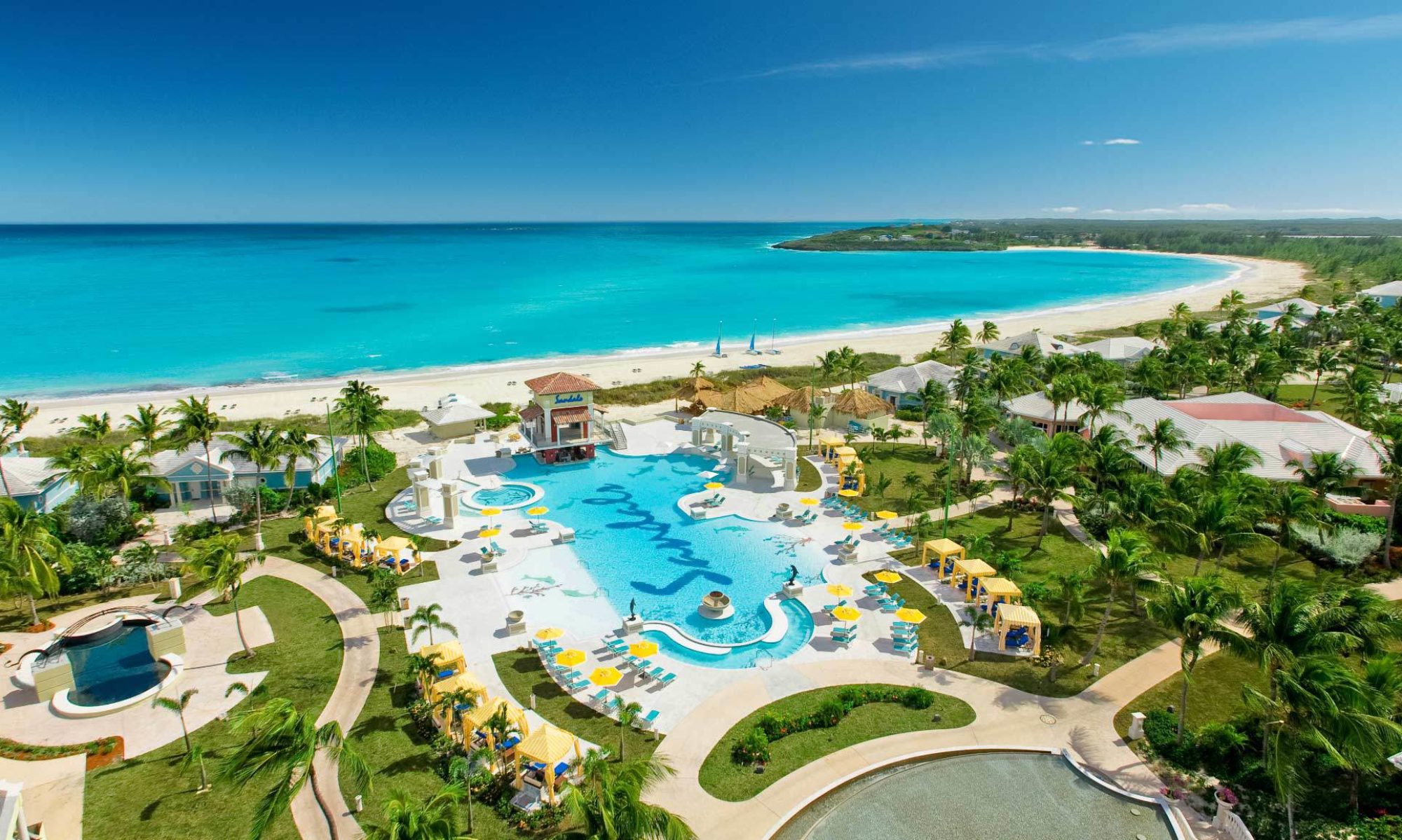As a travel advisor, I always encourage my clients to embrace new experiences. But as a wife, I’m reminded just how powerful travel can be in strengthening relationships.
Our visit to the Tifajek Mud Pool & Hot Springs was more than just an excursion—it was a chance to unwind, let go, and enjoy something completely out of the ordinary together.
We laughed as we covered each other in the warm, mineral-rich mud, we let the mud dry it to a crackly mask, and then rinsed off in the sulfur hot springs to reveal silky smooth skin.
Next, we had a Fijian style 15 minute relaxing massage.
After our massage there was one more natural hot springs.
We felt the tension melt away—not just from our bodies, but from the everyday stresses that can pile up over time.
There’s something about shared adventures that brings couples closer. Whether it’s stepping out of your comfort zone, experiencing something new side by side, or simply having uninterrupted time to be present with each other, these moments remind us why we chose this journey together in the first place.💕
Fiji has a way of slowing time, allowing you to reconnect in ways that are often lost in the rush of daily life. And this experience? A perfect example of why couples should prioritize travel—not just for the destinations but for the deeper bonds they create along the way.💕
𝑾𝒉𝒆𝒏’𝒔 𝒕𝒉𝒆 𝒍𝒂𝒔𝒕 𝒕𝒊𝒎𝒆 𝒚𝒐𝒖 𝒕𝒐𝒐𝒌 𝒂 𝒕𝒓𝒊𝒑 𝒕𝒉𝒂𝒕 𝒃𝒓𝒐𝒖𝒈𝒉𝒕 𝒚𝒐𝒖 𝒄𝒍𝒐𝒔𝒆𝒓?
Let me help you plan your honeymoon, anniversary, or “just because” Fijian getaway.
10 Essential Tips for Traveling in Costa Rica
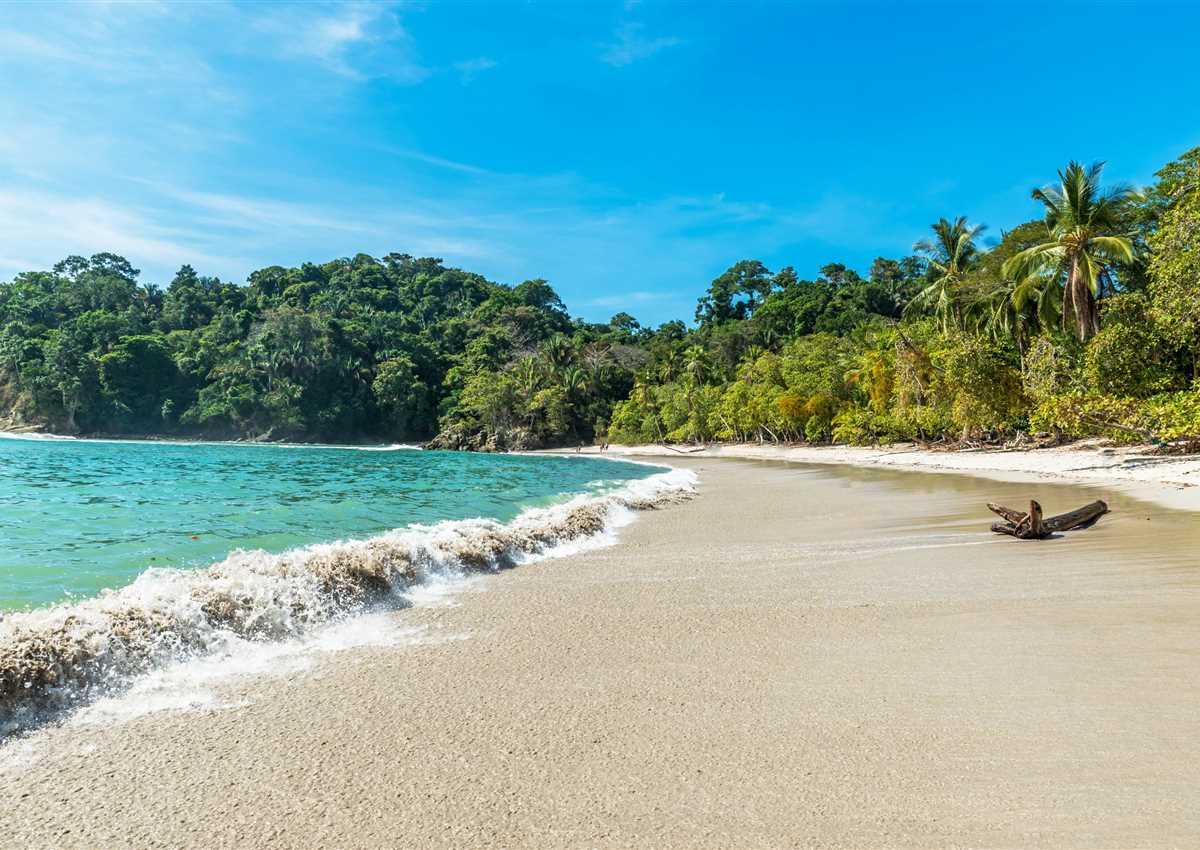
10 Essential Tips for Traveling in Costa Rica
Having explored Costa Rica’s rainforests, beaches, and volcanoes for over a decade, I’ve curated these essential strategies to help you navigate this biodiverse paradise like a seasoned traveler.
1. Master the Microclimates
From the humid Caribbean coast to the cool cloud forests of Monteverde, layer your clothing. I always carry a lightweight rain jacket and quick-dry pants – weather shifts faster than a howler monkey’s call!
2. Currency Smarts
“Colones work better than dollars at local markets” – this mantra saved me countless times. While credit cards are widely accepted, keep small bills for:
- Roadside fruterías (fruit stands)
- National park entry fees
- Tip-based tours
3. Transportation Hacks
After helping 200+ clients navigate routes, I recommend:
| Option | Best For | My Rating |
|---|---|---|
| Domestic Flights | Coast-to-coast trips | ???????? (Time-saving) |
| Shared Shuttles | Popular routes | ???? (Budget-friendly) |
| 4×4 Rental | Off-grid adventures | ???? (Freedom) |
4. Wildlife Wisdom
During my night tour in Tortuguero, our guide whispered:
“Red light preserves night vision and doesn’t disturb nesting turtles”
Always follow your naturalist’s lead – they know where the eyelash vipers hide!
?? Sloth-Spotting Secret
Look for moving clumps in Cecropia trees between 6-8 AM. Their algae-covered fur often blends perfectly with leaves!
5. Sustainable Stays
Seek CST-certified lodges (Certificación para la Sostenibilidad Turística). My top three eco-features to verify:
- Solar water heating systems
- On-site organic gardens
- Community employment programs
6. Spanish Essentials
While most tourism workers speak English, these phrases build instant rapport:
- “Pura vida” – The national greeting (literally “pure life”)
- “¿Dónde está el mirador?” – Where’s the viewpoint?
- “Más despacio, por favor” – Slower, please
7. Packing Priorities
After forgetting waterproof bags in 2018’s rainy season, I now insist clients bring:
- Dry bags for electronics
- Waterproof phone case
- Teva-style sandals
8. Coffee Culture
Skip the hotel brew – take a beneficio tour to taste coffee at its source. My favorite family-run finca in the Central Valley lets you roast your own beans!
9. Beach Safety
Riptides claim more lives than wildlife
10. Safety First
Costa Rica is generally safe, but it’s crucial to stay aware of your surroundings. Avoid walking alone on poorly lit beaches or streets, and never resist robbery attempts if they occur[1][4]. Always keep valuables secure and out of sight, especially in crowded areas like public buses, where pickpocketing can be a concern[3].
Additional Tips for Adventure Seekers
For those looking to explore Costa Rica’s rivers or zip line through its lush forests, safety gear is essential. Always wear a life vest, helmet, and use an oar during river activities. Ensure you receive safety instructions from your tour guide before and during the tour[2].
?? Adventure Safety Checklist
– Wear protective gear: waterproof shoes, shorts, shirt, or bathing suit.
– Bring sunscreen and a change of clothes.
– Avoid bringing valuables.
– Ensure you know how to swim for water activities.
Driving in Costa Rica
Driving in Costa Rica can be challenging due to poor road conditions and aggressive driving habits. Always wear a seatbelt, and avoid driving at night due to poor street lighting[5]. Ensure you have an International Driving Permit and proper insurance coverage[5].
– Learn local traffic laws.
– Keep valuables out of sight.
– Stay vigilant at intersections.
– Travel during daylight hours.
“Pura vida” isn’t just a greeting; it’s a mindset. Stay relaxed, enjoy the journey, and immerse yourself in Costa Rica’s vibrant culture!

Mastering the Seasons and Weather in Costa Rica
As a seasoned travel agent, I’ve had the pleasure of exploring Costa Rica multiple times, and I’m excited to share my insights on navigating its diverse climate conditions. Understanding the seasons and weather patterns is crucial for planning an unforgettable trip.
### Dry vs. Rainy Season: What to Expect
Costa Rica experiences two main seasons: the dry season (December to April) and the rainy season (May to November). The dry season is ideal for outdoor activities like hiking and wildlife spotting, as the weather is generally sunny and dry. On the other hand, the rainy season offers lush landscapes and lower prices, making it a great time for nature lovers and budget-conscious travelers.
### Packing for Microclimates: From Beaches to Cloud Forests
Costa Rica is home to a variety of microclimates, ranging from tropical beaches to cool cloud forests. Packing the right gear is essential to ensure comfort throughout your journey. Here are some tips:
| Location | Packing Essentials |
|---|---|
| Beaches |
|
| Cloud Forests |
|
One of the most memorable experiences I’ve had in Costa Rica was hiking through the cloud forests of Monteverde. The misty atmosphere and vibrant flora made it feel like walking through a mystical world.
By understanding and preparing for Costa Rica’s diverse weather conditions, you’ll be able to fully immerse yourself in the country’s breathtaking landscapes and unforgettable adventures.

Budgeting Smartly for Your Trip
Daily Cost Breakdown: Where to Splurge and Save
Allocate $50-75/day for mid-range travel: splurge on guided nature tours (worth every penny for wildlife spotting), but save by eating at sodas (local eateries) where $5 buys a casado plate with fresh fish.
| Category | Budget | Pro Tip |
|---|---|---|
| Accommodation | $30-50 | Book eco-lodges 3+ months early for dry season |
| Food | $15-25 | Try chorreadas (corn pancakes) at farmers’ markets |
| Transport | $10-20 | Shared shuttles beat rental cars for mountain roads |
Hidden Fees to Avoid: Park Entrances and Transportation
Always carry $15-20 cash per person for national park fees – credit cards often aren’t accepted at remote entrances like Corcovado’s San Pedrillo station.
?? Watch for these unexpected costs
- Airport departure tax: $29 if not included in ticket
- Beach parking: $5-10/day at Manuel Antonio
- Hot springs access: $50+ at premium resorts vs free natural springs near Arenal
“I once saved a client $200 by recommending shared boat transfers from Sierpe to Drake Bay instead of private charters – same scenery, half the cost!”
Transportation Hacks
Book Interbus shuttles 72+ hours in advance for 15% discounts. For car rentals, insist on 4WD mandatory during green season (May-Nov) – regular sedals get stuck on gravel roads to Monteverde.

Navigating Transportation Like a Pro
Public Buses vs. Private Shuttles: My Top Picks
For budget-conscious travelers, Costa Rica’s public bus system offers an authentic experience. I always recommend the San José to Puerto Viejo route for its scenic Caribbean views. However, private shuttles like Interbus provide air-conditioned comfort for longer journeys to destinations like La Fortuna.
Renting a Car: Insider Tips for Road Conditions and Insurance
While 4WD vehicles are essential for destinations like Monteverde, I’ve found that compact cars work perfectly for coastal drives along Guanacaste’s Route 151. Always confirm these three insurance types:
| Type | Coverage | My Recommendation |
|---|---|---|
| CDW | Collision Damage | Mandatory by law |
| SLI | Third-Party Liability | Includes $1M coverage |
| PAI | Personal Accident | Optional but advised |
“I never drive after 6pm during rainy season (May-Nov) – afternoon downpours create unexpected river crossings on rural roads.”
Road Condition Checklist
Before any road trip, I always:
- Check Waze for real-time traffic updates
- Verify bridge conditions with my hotel concierge
- Pack physical maps as backup (cell service drops in mountains)

Staying Safe and Secure in Costa Rica
As a seasoned travel agent, I’ve had the pleasure of exploring Costa Rica numerous times, and I’m excited to share my insights on how to stay safe and secure during your trip. Costa Rica is generally a very safe country, but like any popular tourist destination, it’s important to be mindful of your surroundings.
Avoiding Theft in Tourist Hotspots
When visiting popular spots like San José, Tamarindo, or Puerto Viejo, it’s crucial to keep an eye on your belongings. Here are a few tips to help you avoid theft:
- Stay Alert: Be aware of your surroundings, especially in crowded areas or tourist hotspots.
- Secure Your Belongings: Use hotel safes for valuables and keep a close eye on your luggage.
- Use Reputable Transportation: Stick to licensed taxis or shuttle services to avoid scams.
One of the best ways to avoid theft is to blend in with the locals. Avoid displaying expensive jewelry or watches, and keep your valuables secure.
Wildlife Encounters: Dos and Don’ts
Costa Rica is renowned for its incredible wildlife, from monkeys to sloths. When encountering these amazing creatures, remember:
- Respect Their Space: Keep a safe distance from wildlife to avoid disturbing them.
- Follow Guidelines: Listen to park rangers or guides for advice on interacting with wildlife.
- Stay on Trails: Avoid venturing off designated paths to prevent accidents and protect the environment.
By following these tips, you’ll not only ensure a safe and enjoyable trip but also contribute to preserving Costa Rica’s beautiful environment and wildlife.

Choosing the Right Accommodations in Costa Rica
When it comes to accommodations in Costa Rica, I always recommend considering two main options: eco-lodges and beach resorts. Both offer unique experiences that can enhance your travel adventure.
Eco-Lodges vs. Beach Resorts: My Personal Favorites
I have had the pleasure of staying in both eco-lodges and beach resorts, and each has its own charm. Eco-lodges are perfect for nature lovers, offering an immersive experience in the heart of Costa Rica’s lush rainforests. They often provide opportunities for wildlife spotting and hiking, making them ideal for those seeking an adventurous getaway.
On the other hand, beach resorts are great for relaxation and sunbathing. They usually offer stunning ocean views, beautiful beaches, and a variety of water activities like surfing or snorkeling. My personal favorite is a combination of both—starting with an eco-lodge to connect with nature, then moving to a beach resort to unwind.
Booking Strategies for Peak Seasons
Peak travel seasons in Costa Rica typically occur during the dry months from December to April. To ensure availability and get the best deals, I recommend booking your accommodations well in advance. Here are some strategies to keep in mind:
| Strategy | Description |
|---|---|
| Early Booking | Book at least 3-6 months before your trip to secure popular spots. |
| Flexibility | Consider traveling during the shoulder season for lower prices and fewer crowds. |
| Package Deals | Look for packages that include accommodations, tours, and transportation for a hassle-free experience. |
Booking early not only ensures availability but also often comes with discounts or special offers. It’s a win-win for travelers!
By following these tips, you can enjoy a seamless and enjoyable stay in Costa Rica, whether you prefer the tranquility of an eco-lodge or the luxury of a beach resort.

Maximizing Your Adventure Itinerary in Costa Rica
As a seasoned travel agent, I’ve had the privilege of exploring Costa Rica’s breathtaking landscapes and vibrant culture. Here are my top tips for making the most of your adventure itinerary:
Must-Do Activities: Ziplining, Volcano Hikes, and Hot Springs
Costa Rica is a paradise for adventure seekers, and I always recommend starting with these must-do activities:
- Ziplining: Experience the rush of flying through the jungle canopy, offering breathtaking views of the lush surroundings.
- Volcano Hikes: Hike around Arenal Volcano or explore the unique landscapes of Poás Volcano for an unforgettable experience.
- Hot Springs: Relax in the natural hot springs, a perfect way to unwind after a day of exploring.
These activities not only provide adrenaline-pumping excitement but also offer a chance to connect with nature and rejuvenate your spirit.
Off-the-Beaten-Path Gems I’ve Discovered
While many travelers flock to popular destinations, I’ve discovered some hidden gems that are truly worth exploring:
Another gem is the Monteverde Cloud Forest, where you can walk among the clouds and experience the mystical beauty of this unique ecosystem.
Exploring these lesser-known areas not only enriches your travel experience but also supports local communities and conservation efforts.
For those looking for a truly immersive experience, consider visiting during the green season, when the landscapes are lush and vibrant, and the crowds are smaller.
Additional Tips for Your Costa Rican Adventure
To ensure a smooth and enjoyable trip, here are a few more tips from my personal experience:
| Tip | Description |
|---|---|
| Pack Wisely | Bring layers for cooler evenings, waterproof gear for unexpected rain showers, and comfortable hiking shoes for exploring. |
| Learn Some Spanish | Even basic phrases like “gracias” (thank you) and “¿dónde está…?” (where is…) can go a long way in enhancing your interactions with locals. |
| Respect Local Culture | Be mindful of local customs and traditions, especially when visiting indigenous communities or attending cultural events. |
By following these tips and embracing the spirit of adventure, you’ll be well on your way to creating unforgettable memories in Costa Rica ????.

Packing Essentials You Won’t Regret
Rain Gear and Sun Protection: Non-Negotiables
I never leave for Costa Rica without my quick-dry poncho and UV-blocking sunglasses. The microclimates here can shift from torrential downpours to blazing sunshine within hours. Pro tip: Pack a collapsible umbrella that fits in your daypack – I’ve found the Repel Windproof Travel Umbrella withstands those sudden afternoon storms.
My Must-Have Items
| Item | Why It Matters |
|---|---|
| Reef-safe sunscreen | Required at many beaches and protects delicate marine life |
| Lightweight rain jacket | Packable layers beat bulky ponchos for cloud forest hikes |
Footwear for Every Terrain: From Waterfalls to City Streets
After helping hundreds of clients navigate Costa Rica’s diverse landscapes, I always recommend three essential pairs:
My Footwear Rotation
Water shoes: Perfect for hot springs and rocky riverbeds (I prefer the KEEN Newport H2 for ankle support).
Trail runners: Lightweight yet grippy enough for muddy volcano trails.
Sandals with arch support: For evenings in Tamarindo or San José’s cobblestone streets.
Don’t make the mistake I did on my first trip – break in new shoes before arrival. The combination of humidity and rugged trails can turn minor rubs into trip-ruining blisters.
Terrain-Specific Recommendations
- Manuel Antonio National Park: Closed-toe shoes for monkey-viewing trails
- La Fortuna hot springs: Water shoes with non-slip soles
- Monteverde cloud forest: Waterproof hiking boots with ankle support

Cultural Etiquette and Local Interactions in Costa Rica
As a seasoned travel agent, I’ve had the privilege of exploring Costa Rica numerous times, and I’ve learned that understanding local customs is key to a memorable trip. Here are some essential tips to help you navigate cultural etiquette and local interactions with ease:
Greetings and Tipping: Making a Positive Impression
When interacting with locals, a warm “Hola, ¿cómo estás?” (Hello, how are you?) can go a long way. Costa Ricans appreciate genuine interest in their culture, so take the time to learn a few basic phrases. Tipping is generally not expected but is appreciated for good service. Aim for 10% in restaurants and bars.
Tipping Guidelines:
| Service | Tipping Guidelines |
|---|---|
| Restaurants and Bars | 10% of the total bill |
| Tour Guides | $10-$20 per person per day |
| Hotel Staff | $1-$2 per bag for porters |
Supporting Sustainable Tourism Practices
Costa Rica is renowned for its commitment to sustainability, and as a visitor, you can play a significant role in supporting eco-friendly practices. Here are some tips to help you make a positive impact:
By embracing these practices, you not only contribute to the preservation of Costa Rica’s natural beauty but also enhance your travel experience by immersing yourself in the local culture.
Traveling responsibly is not just about reducing your footprint; it’s also about enriching your journey with meaningful interactions and unforgettable experiences.
As you explore Costa Rica, remember that every small action counts, and your respect for the environment and local customs will be deeply appreciated by the Ticos (Costa Ricans).

Dining Like a Local in Costa Rica
As a seasoned travel agent, I’ve had the pleasure of exploring Costa Rica’s vibrant culinary scene. Dining like a local is an essential part of any travel experience, and Costa Rica offers a rich tapestry of flavors to discover.
Must-Try Dishes: Gallo Pinto, Casado, and Fresh Seafood
When in Costa Rica, you must try the iconic dishes that locals adore. Gallo Pinto, a hearty breakfast staple made from rice and beans, is a must-have. Another favorite is Casado, a traditional dish featuring rice, beans, meat, and vegetables. Don’t miss the opportunity to indulge in fresh seafood, especially if you’re near the coast.
One of my favorite memories is enjoying a plate of Gallo Pinto at a small café in San José. The combination of flavors and textures was truly unforgettable.
Navigating Food Markets and Sodas
Exploring local food markets and sodas (small, family-run restaurants) is a great way to immerse yourself in Costa Rican culture. These markets offer a variety of fresh produce and local specialties, while sodas provide an authentic dining experience with delicious, homemade meals.
Here are some tips for navigating these culinary gems:
| Tip | Description |
|---|---|
| Learn Basic Spanish | Knowing a few basic phrases like “¿Cuánto cuesta?” (How much does it cost?) can go a long way in enhancing your experience. |
| Be Adventurous | Don’t be afraid to try new foods and drinks. Costa Rica is known for its diverse cuisine, so be sure to explore it fully. |
| Respect Local Customs | Always respect local customs and traditions, especially when dining in family-run establishments. |
By embracing these tips and immersing yourself in Costa Rica’s culinary culture, you’ll have a truly unforgettable travel experience ????.

Health and Wellness on the Go
As a seasoned travel agent, I’ve learned a thing or two about staying healthy while exploring the beautiful landscapes of Costa Rica. Here are some essential tips to keep you safe and well during your travels:
### Water Safety and Food Hygiene Tips
When traveling in Costa Rica, it’s crucial to prioritize water safety and food hygiene. Always drink bottled or filtered water to avoid waterborne illnesses. When dining out, opt for restaurants that have a good reputation and ensure that your food is cooked thoroughly. Fresh fruits and vegetables should be washed with clean water before consumption.
Here are some additional tips to keep in mind:
| Tip | Description |
|---|---|
| Choose Safe Water Sources | Stick to bottled or filtered water for drinking and brushing teeth. |
| Inspect Food Before Eating | Ensure that your food is cooked thoroughly and served hot. |
| Wash Fruits and Vegetables | Use clean water to wash fruits and vegetables before eating them raw. |
### Essential Vaccinations and First-Aid Kit Must-Haves
Before traveling to Costa Rica, consult your doctor about any necessary vaccinations. Typically, you’ll need to be up-to-date on routine vaccinations, and depending on your activities, you might need additional shots like hepatitis A or typhoid.
A well-stocked first-aid kit is also essential. Include items like band-aids, antiseptic wipes, pain relievers, and any personal medications. Here’s a list of must-haves:
Remember, prevention is key. By taking these precautions, you can enjoy a safe and healthy trip to Costa Rica.
Staying informed and prepared will help you navigate any health challenges that might arise during your travels. Always prioritize your health and safety to ensure a wonderful experience in this beautiful country.

Conclusion: Embracing the Pura Vida Spirit in Costa Rica
As I reflect on my experiences traveling through Costa Rica, I am reminded of the incredible diversity and beauty this country offers. From the lush rainforests to the stunning beaches, every moment is an opportunity to connect with nature and immerse yourself in the vibrant culture. By following these 10 Essential Tips for Traveling in Costa Rica, you will not only ensure a smooth and enjoyable journey but also embrace the Pura Vida spirit that defines this enchanting land.
As a travel agent, I’ve had the privilege of guiding many travelers through this beautiful country, and I’ve seen firsthand how these tips can enhance their experiences. So, pack your bags, grab your camera, and get ready to explore one of the most incredible destinations on Earth!
Costa Rica is more than just a place to visit; it’s an experience that will touch your heart and inspire your soul. With its rich biodiversity, stunning landscapes, and warm hospitality, it’s a journey you’ll always treasure.
Remember, the key to a successful trip is preparation and an open mind. Be ready to embrace the unexpected, learn from the locals, and enjoy every moment of your journey. ¡Pura Vida!
Top 7 Hidden Gems in Maui Only Locals Know About
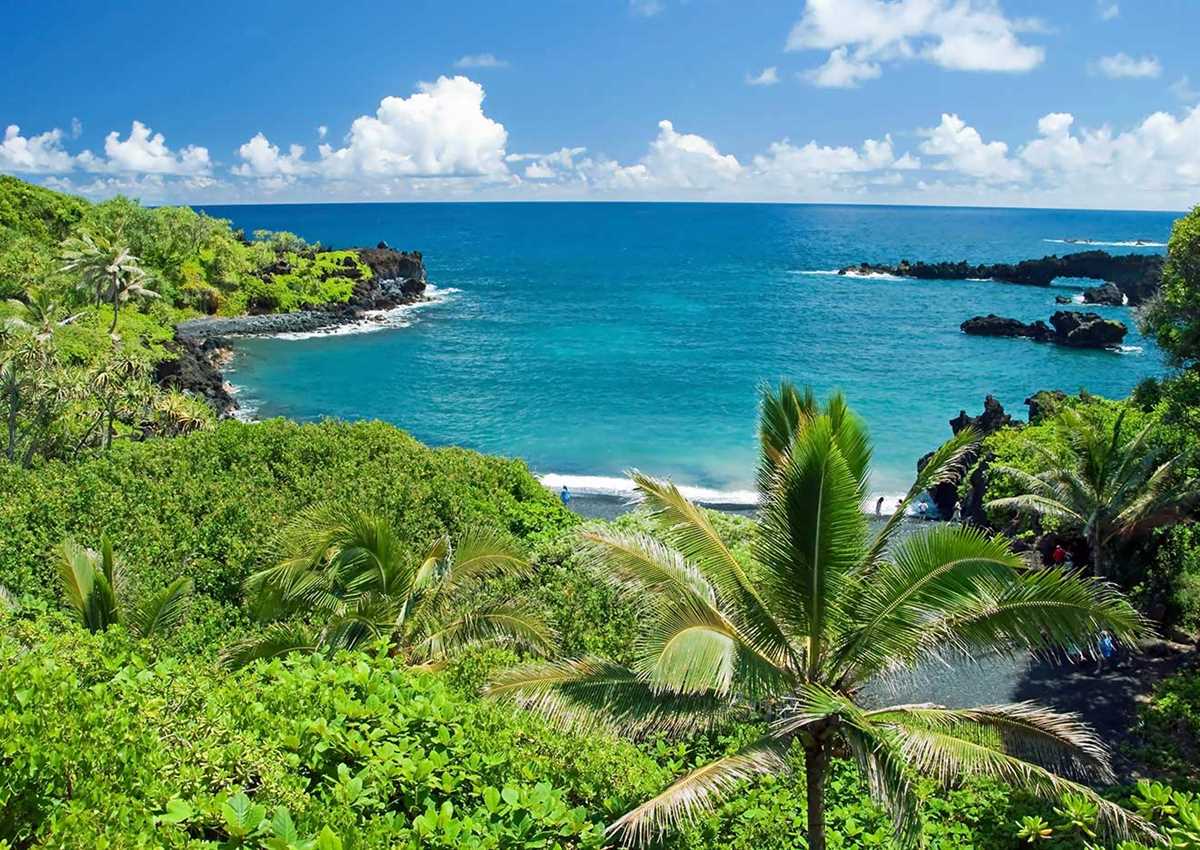
Top 7 Hidden Gems in Maui Only Locals Know About
After years of exploring every corner of the Valley Isle, I’ve curated these lesser-known treasures that embody Maui’s true spirit. These spots offer authentic experiences beyond the guidebooks, perfect for travelers seeking to connect with the island’s soul.
1. Nakalele Blowhole Secret Cove
Tucked north of the famous blowhole, this crescent-shaped cove features natural tide pools with crystal-clear water. I always recommend bringing water shoes and a reef-safe sunscreen for the best experience.
Why it’s special:
The volcanic rock formations create natural infinity pools that overlook the Pacific – perfect for serene sunrise swims.
2. Waihe’e Ridge Trail’s Hidden Lookout
While most hikers stop at the main viewpoint, I guide clients 200 yards further to a bamboo grove with panoramic coastal views. The morning mist here creates unforgettable photo opportunities.
“This secret spot makes you feel like you’ve discovered Maui’s beating heart” – Local hiking guide’s favorite description
3. La Perouse Bay’s Lava Tube Caves
Beyond the bay’s famous snorkeling area, ancient lava flows created a network of coastal caves. I always remind visitors to bring a waterproof flashlight and check tide charts before exploring.
| Location | Ideal Time |
|---|---|
| Nakalele Cove | 7-9 AM |
| Waihe’e Lookout | 6-8 AM |
| Lava Tubes | Low tide days |
4. Kula Forest Reserve’s Bamboo Path
This whispering bamboo corridor remains unknown to most visitors. I suggest wearing a light jacket – the elevation creates a cool microclimate perfect for afternoon walks.
5. ‘Ohe’o Gulch’s Secret Falls
Beyond the Seven Sacred Pools, a 20-minute upstream hike reveals cascades with natural waterslides. I always pack a picnic lunch to enjoy on the smooth basalt rocks.
6. Kahakuloa Village’s Banana Bread Stop
This roadside stand near the hairpin turns serves the island’s best banana bread. My secret? Ask for the ‘lava rock’ version with macadamia nuts and dark chocolate chunks.
7. Makena Landing’s Turtle Cleaning Station
At this underwater rock formation, green sea turtles gather for symbiotic fish cleanings. I recommend snorkeling here at high tide when visibility peaks.
Top 7 Hidden Gems in Maui Only Locals Know About
As a travel agent who has had the privilege of exploring Maui extensively, I’m excited to share with you my top picks for hidden gems that only locals know about. One of these treasures is Wai’anapanapa State Park, a place that never fails to leave me in awe.
Wai’anapanapa State Park: Volcanic Wonders & Black Sand Beaches
Located on the eastern coast of Maui, Wai’anapanapa State Park is a must-visit for anyone looking to experience the island’s unique natural beauty. This park is home to stunning volcanic landscapes, including lava tubes and a breathtaking black sand beach.
Best Time to Visit for Solitude
To truly appreciate the tranquility of Wai’anapanapa State Park, I recommend visiting early in the morning or late in the afternoon. These times offer not only better lighting for photography but also fewer crowds, allowing you to immerse yourself in the serene atmosphere of the park.
Essential Gear for Exploring Lava Tubes
When exploring the lava tubes at Wai’anapanapa, it’s crucial to be well-prepared. Here are some essentials to bring along:
| Item | Description |
|---|---|
| Headlamp or Flashlight | For navigating through the dark lava tubes. |
| Sturdy Shoes | For safe walking on uneven terrain. |
| Water and Snacks | To keep you hydrated and energized during your exploration. |
Exploring Wai’anapanapa State Park is an experience that will leave you with unforgettable memories. The combination of volcanic landscapes and the tranquil black sand beach creates a truly unique setting that showcases the natural beauty of Maui.
As you explore these hidden gems, remember to respect the environment and local culture, ensuring that these treasures remain preserved for future generations.

Nakalele Blowhole: Nature’s Spectacular Show
As someone who’s witnessed countless Maui sunsets, nothing compares to the raw power of Nakalele Blowhole at golden hour. The 100-foot geyser-like spray creates rainbows in the mist – bring a waterproof camera!
Safety Tips for Viewing the Blowhole
Stay 50+ feet back from the crater’s edge – rogue waves can appear suddenly. Wear sturdy water shoes with grip for the volcanic rock terrain. Visit at low tide when conditions are safest.
Pro Tip: Timing Your Visit
Arrive 1 hour before peak low tide (check Maui Tide Tables) for optimal viewing without crowds. Morning visits often mean calmer winds.
Nearby Hidden Tide Pools to Explore
Just 200 yards north, you’ll find the secret Acid War Zone tide pools teeming with:
| Species | Best Viewing |
|---|---|
| Yellow Tang | Midday sunlight |
| Sea Urchins | Rock crevices |
| Hermit Crabs | Pool edges |
“Wear reef-safe sunscreen! These delicate ecosystems need protection – I recommend mineral-based formulas that won’t harm marine life.”
After exploring, rinse your feet at the hidden freshwater shower (look for the bamboo pipe near the parking area) to remove salt and volcanic dust.

Top 7 Hidden Gems in Maui Only Locals Know About
3. Ocean Vodka Organic Farm & Distillery: Sustainable Sips
?? Why This Organic Oasis Stands Out
This 80-acre organic farm grows sugarcane using deep ocean mineral water and solar energy – their commitment to sustainability makes every sip taste like liquid aloha.
Guided Tour Highlights
Don’t miss the free-range chicken coop tour where they explain how poultry contributes to natural pest control. The sugarcane crushing demonstration lets you taste raw cane juice straight from the stalk.
“Their carbon-negative distillation process will change how you think about liquor production – I insist clients try the sea salt rim made with Hawaiian red alaea clay.”
Sunset Cocktail Recommendations
| Cocktail | Key Ingredients | Best Paired With |
|---|---|---|
| Deep Ocean Martini | Ocean Vodka, lilikoi foam | Pineapple-coconut canapés |
| Maui Mule | Organic ginger beer, lime | Kalo (taro) chips |
Their solar-powered tasting room offers panoramic views of the West Maui Mountains – arrive 90 minutes before sunset to secure balcony seating. The farm-to-glass ethos extends to their cocktail garnishes, which change daily based on harvest availability.

Honolua Bay: Snorkeling Sanctuary Without the Crowds
Marine Life Spotting Guide
Glide past vibrant coral formations to encounter green sea turtles grazing on limu (Hawaiian algae) and tropical fish like:
| Species | Location |
|---|---|
| Parrotfish | Outer reef edges |
| Whitetip Reef Sharks | Deep crevices (harmless) |
| Hawaiian Cleaner Wrasse | Cleaning stations near coral heads |
“The bay’s protected status means you’ll see more sea life here than at any resort beach.”
Trail Access Tips for Rocky Shorelines
Footwear Recommendations
Wear reef shoes with thick soles – the lava rock shoreline becomes slippery when wet. I keep spare pairs in my tour van for clients.
Navigate the access trail like a local:
- Left fork at the first split leads to calmer entry points
- Avoid midday when cruise ship groups arrive (11 AM-2 PM)
- Use the ironwood trees as handholds on steep sections

Top 7 Hidden Gems in Maui Only Locals Know About
As a travel agent, I’ve had the privilege of exploring Maui’s lesser-known spots, and I’m excited to share my favorite hidden gems with you. One of these treasures is Paako Cove, also known as Secret Beach, a secluded white sand paradise that will leave you enchanted.
Paako Cove (Secret Beach): A Secluded White Sand Paradise
Paako Cove is a tranquil haven, perfect for those seeking a peaceful escape from the crowds. The beach offers stunning views, crystal-clear waters, and powdery white sand, making it an ideal spot for relaxation and sunbathing.
Photography Tips for Golden Hour
For photography enthusiasts, Paako Cove is a dream location, especially during golden hour. Here are some tips to capture the perfect shot:
- Timing is Everything: Arrive about an hour before sunset to capture the soft, warm light that enhances the beauty of the surroundings.
- Composition: Experiment with different angles and compositions, incorporating the beach’s natural features like rocks or palm trees.
- Lighting: Use the golden light to highlight the textures of the sand and the vibrant colors of the sky.
Parking & Access Point Strategies
Accessing Paako Cove requires some planning, but it’s well worth the effort. Here’s how to make the most of your visit:
- Parking: Be prepared for limited parking, so arrive early to secure a spot. Consider carpooling or using a shuttle service if available.
- Access Points: The beach is accessible via a short hike from the parking area. Wear comfortable shoes and bring plenty of water to stay hydrated.
- Respect the Environment: Always follow local guidelines and respect the natural environment to preserve this beautiful spot for future visitors.
Paako Cove is truly a hidden paradise, offering a serene and breathtaking experience that will leave you feeling refreshed and inspired.
Additional Hidden Gems in Maui
Beyond Paako Cove, Maui is filled with other hidden gems waiting to be discovered. Here are a few more of my favorites:
| Location | Description |
|---|---|
| Ho’okipa Beach | A windsurfer’s paradise with stunning views and exciting activities. |
| Wai’anapanapa State Park | Known for its black sand beach and ancient Hawaiian temples, offering a glimpse into Maui’s rich history. |
| Road to Hana | A scenic drive along the coast, featuring waterfalls, hiking trails, and breathtaking ocean views. |
Each of these locations offers a unique experience, from adventure to cultural exploration, making Maui a diverse and captivating destination for any traveler.

Ali’i Kula Lavender Farm: Upcountry Serenity
Seasonal Blooms Calendar
| Season | Highlights |
|---|---|
| Spring (March-May) | Lavender buds bursting with color, perfect for photography |
| Summer (June-August) | Full bloom aromatherapy sessions and distillation demonstrations |
| Fall (September-November) | Harvest festivals with fresh lavender bundles |
Picnic Essentials for the Garden
My Curated Picnic Checklist
- Local treats: Maui Gold pineapple slices
- Must-pack: Insulated water bottle (no vendors on-site)
- Secret addition: Lavender shortbread cookies from nearby Komoda Store
“The lavender-infused lemonade here makes ordinary picnics feel like spa retreats – bring cash for the farm stand!”
Beyond the Basics
Don’t miss the hidden walking path behind the gift shop leading to panoramic views of Maui’s central valley. I always recommend wearing sturdy shoes – the volcanic gravel can be tricky!

7. La Perouse Bay: Rugged Coastal Adventures
Footwear Recommendations for Lava Fields
After guiding hundreds of clients through La Perouse Bay’s volcanic terrain, I always recommend closed-toe hiking shoes with thick rubber soles. The razor-sharp a?a lava can shred thin soles within minutes – I learned this the hard way during my first season!
Pro Tip: Sock Selection Matters
Pair your shoes with moisture-wicking merino wool socks. The combination prevents blisters during the 2.5-mile roundtrip hike across uneven terrain.
Dolphin Spotting Techniques
For the best spinner dolphin encounters, arrive at sunrise when the bay transforms into a liquid mirror. Position yourself near the submerged lava tubes where these acrobats play:
“Look for circular ripples 50 yards offshore – that’s their ‘staging area’ before morning feedings.”
– Local marine biologist’s advice I’ve verified through 12 successful sightings
| Time | Behavior | Viewing Tip |
|---|---|---|
| 6:00-8:00 AM | Socializing | Use polarized sunglasses |
| 8:00-10:00 AM | Feeding | Watch for seabird activity |
- Collapsible hiking poles (carbon fiber)
- 2L hydration bladder with electrolyte tablets
- Neck gaiter for sun/wind protection

Top 7 Hidden Gems in Maui Only Locals Know About
As a travel agent who has had the privilege of exploring Maui extensively, I’m excited to share with you my top picks for hidden gems that only locals know about. These spots are truly off the beaten path and offer a unique experience that will make your trip to Maui unforgettable.
1. Honolua Bay
Honolua Bay is a marine preserve located on the northwest coast of Maui. It’s a snorkeler’s paradise, with crystal-clear waters and an incredible array of marine life. The bay is protected from the open ocean, making it a safe and serene spot for both beginners and experienced snorkelers.
2. Wai’anapanapa State Park
Wai’anapanapa State Park is a stunning coastal park that offers breathtaking views of the ocean and surrounding landscape. It features a beautiful black sand beach, ancient Hawaiian temples, and a freshwater cave. This park is a must-visit for anyone interested in history and nature.
3. The Road to Hana
The Road to Hana is a scenic drive that winds through lush rainforests, past waterfalls, and along the coast. It’s not just a journey; it’s an experience. Be sure to stop at the numerous waterfalls, hiking trails, and beaches along the way. Don’t forget to try some of the local snacks and drinks at the roadside stands.
4. Haleakala National Park
Haleakala National Park is famous for its sunrise views from the summit of Haleakala volcano. However, it also offers stunning landscapes, hiking trails, and a chance to see the unique silversword plant. Watching the sunrise here is truly a once-in-a-lifetime experience.
5. Lahaina
Lahaina is a charming historic town on the west coast of Maui. It’s filled with art galleries, restaurants, and shops. Take a stroll along Front Street, visit the Banyan Tree Park, and enjoy the lively atmosphere of this former whaling village.
6. Iao Valley State Park
Iao Valley State Park is a lush, green valley that was once the site of a pivotal battle in Hawaiian history. It features the iconic Iao Needle rock formation and offers beautiful hiking trails. The park is a great place to learn about Hawaiian history and culture.
7. Makena Beach State Park
Makena Beach State Park, also known as Big Beach, is a stunning stretch of coastline with crystal-clear waters and powdery white sand. It’s perfect for swimming, sunbathing, and snorkeling. Be cautious of strong currents during certain times of the year.

Packing Essentials for Maui’s Hidden Gems
Reef-Safe Sunscreen Brands I Trust
When exploring Maui’s beautiful beaches and marine preserves, it’s crucial to use reef-safe sunscreen. Some of my favorite brands include Badger, Blue Lizard, and Stream2Sea. These sunscreens not only protect your skin but also help preserve the delicate marine ecosystem.
Hydration Solutions for Remote Locations
Staying hydrated is essential, especially when visiting remote locations like those along the Road to Hana. I recommend carrying a refillable water bottle and using a portable water filter or purification tablets to ensure access to safe drinking water. Additionally, consider packing electrolyte-rich snacks to maintain your energy levels.
Maui is a place where nature and culture blend seamlessly. By exploring these hidden gems, you’ll not only experience the beauty of the island but also gain a deeper understanding of its rich history and traditions.

Local Dining Secrets Near Hidden Spots
Farm-to-Table Cafés in Upcountry
Nestled in Maui’s rolling hills, Kula Bistro serves lilikoi-glazed mahi-mahi with produce harvested that morning. Arrive before 9 AM to watch mist clear from lavender fields while sipping 100% Kona coffee.
Beachside Food Truck Hotspots
At Secret Cove Eats (look for the rainbow-painted truck), the garlic shrimp plate with pineapple salsa makes locals line up. Go Wednesday nights when fishermen deliver fresh opah.
“The coconut-crusted ahi here ruined restaurant poke bowls for me forever” – Regular Customer

Top 7 Hidden Gems in Maui Only Locals Know About
1. Nakalele Blowhole’s Secret Tide Pools
While tourists crowd the main blowhole, walk 200 yards north to discover natural champagne pools with volcanic rock shelves perfect for sunset picnics.
2. Waihou Spring Forest Reserve
This moss-covered canyon near Makawao features a 1.8-mile loop trail through rare olapa trees. Bring: bug spray, closed-toe shoes, and a flashlight for exploring lava tubes.
3. Ko?ie?ie Fishpond’s Moonlit Tours
Ancient Hawaiians built this 3-acre stone wall enclosure for fish farming. Local guides now offer stargazing kayak tours where you’ll learn traditional throw-net techniques.
| Location | Ideal Time | Local Secret |
|---|---|---|
| Nakalele Tide Pools | Weekday sunsets | Low tide reveals sea urchin habitats |
| Waihou Spring | 7-9 AM | Morning mist creates rainbow valleys |
4. La Perouse Bay’s Lava Field Trails
Park at the first gravel lot before the official entrance to find unmarked trails leading to secluded coves with spinner dolphin sightings.
5. Hana Lava Tube’s Hidden Chamber
Most visitors stop at the main cavern, but crawling 50 yards past the “Do Not Enter” sign (with a guide) reveals glowworm colonies on the ceiling.
6. ?Iao Valley’s Backside Stream
Instead of fighting for parking at the state park, take the Kepaniwai Park Heritage Gardens path to a swimming hole locals call “Cold Pond” – bring reef shoes.
7. Kahakuloa Head’s Banana Bread Stop
Julia’s Best Banana Bread (cash-only stand) uses hand-picked apples bananas from the valley below. Get there by 10 AM before they sell out.
“The real Maui magic happens when you slow down – stay an extra hour after sunset, ask fishermen about their catch, and always say ‘yes’ to homemade haupia.”

Top 7 Hidden Gems in Maui Only Locals Know About
As a travel agent who has spent years exploring the beautiful island of Maui, I’m excited to share with you my top picks for hidden gems that only locals know about. These spots are not only breathtaking but also offer a unique experience that will make your trip truly unforgettable.
1. Honolua Bay
Honolua Bay is a marine preserve located on the northwest coast of Maui. It’s a snorkeler’s paradise, with crystal-clear waters and an incredible array of marine life. The bay is protected from the open ocean, making it a safe and serene spot for both beginners and experienced snorkelers.
2. The Road to Hana’s Secret Waterfalls
The Road to Hana is famous for its stunning scenery and numerous waterfalls, but there are a few secret spots that only locals know about. These hidden waterfalls are tucked away from the main road and require a short hike to reach. The journey is well worth it, as you’ll be rewarded with breathtaking views and a chance to swim in natural pools.
Always remember to respect the land and leave nothing behind but bubbles and take nothing but memories.
3. Ho’okipa Beach Park
Ho’okipa Beach Park is a windsurfer’s haven, but it’s also a great spot for watching sea turtles. The beach is protected, and during the winter months, you can see these magnificent creatures basking in the sun. It’s a truly unique experience that will leave you in awe.
4. Wai’anapanapa State Park
Wai’anapanapa State Park is home to a stunning black sand beach, ancient Hawaiian temples, and a beautiful coastal hike. It’s a place steeped in history and natural beauty, offering a glimpse into Maui’s rich cultural heritage.
5. Lahaina’s Front Street
Lahaina’s Front Street is a charming historic district filled with shops, restaurants, and galleries. It’s a great place to explore and experience the local culture. Be sure to check out the famous Banyan Tree Park, which is home to one of the largest banyan trees in the United States.
6. Haleakala National Park at Sunrise
Watching the sunrise from Haleakala National Park is an unforgettable experience. The park is home to a dormant volcano, and the early morning hours offer breathtaking views of the sunrise from the summit. It’s a truly spiritual experience that will leave you feeling inspired.
7. Paia Town
Paia Town is a quaint, laid-back community filled with eclectic shops and restaurants. It’s a great place to relax and enjoy the local vibe. Be sure to visit the Paia Fish Market for some of the best seafood on the island.

Responsible Tourism Practices
Leave No Trace Strategies
When exploring these hidden gems, it’s essential to practice leave no trace strategies. This means taking all trash with you, not disturbing the natural environment, and respecting any protected areas. By doing so, we can ensure that these beautiful spots remain pristine for future generations.
Cultural Respect Guidelines
Maui is rich in cultural heritage, and it’s important to respect local customs and traditions. Always be mindful of sacred sites and respect any rules or guidelines provided by local authorities. By showing respect, we can build stronger connections with the community and enhance our travel experience.
Additional Tips for Cultural Respect
Learn a few basic Hawaiian phrases, such as “Aloha” (hello) and “Mahalo” (thank you). This small gesture can go a long way in showing respect for the local culture.

Conclusion: Unveiling Maui’s Best-Kept Secrets
As a travel agent who has had the privilege of exploring Maui extensively, I can confidently say that these hidden gems have left an indelible mark on my travels. From the serene beauty of Ho’okipa Beach to the breathtaking vistas of Wai’anapanapa State Park, each location offers a unique experience that will enrich your journey.
Here’s a quick recap of the top 7 hidden gems in Maui that only locals know about:
| Hidden Gem | Description |
|---|---|
| Ho’okipa Beach | A haven for surfers and beach lovers alike, known for its consistent waves and stunning sunsets. |
| Wai’anapanapa State Park | Features a black sand beach, ancient Hawaiian temples, and lush tropical landscapes. |
| Pipiwai Trail | A scenic hike leading to the majestic Waimoku Falls, surrounded by lush rainforest. |
| La Perouse Bay | A tranquil spot for snorkeling and exploring marine life. |
| Maui Tropical Plantation | A picturesque plantation offering tram tours and a chance to explore local flora. |
| Pa’ako Cove (Secret Cove) | A secluded beach perfect for relaxation and sunbathing. |
| Kahanu Garden | A serene botanical garden featuring ancient Hawaiian temples and stunning plant species. |
As you explore these hidden gems, remember to respect the local environment and culture. Enjoy your journey and let the beauty of Maui leave you with unforgettable memories ?????
Navigating Bali Like a Pro: Transportation, Etiquette, and Cultural Do’s and Don’ts
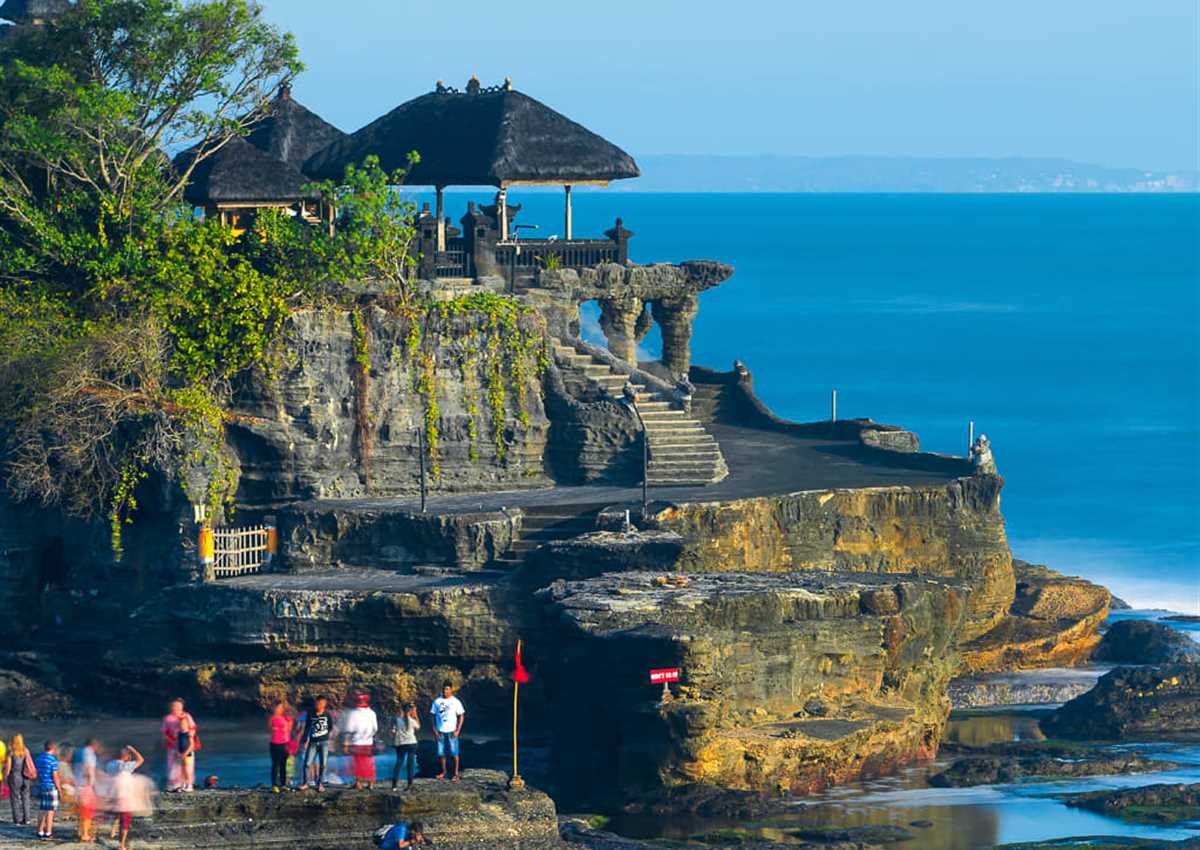
Navigating Bali Like a Pro: Transportation, Etiquette, and Cultural Do’s and Don’ts
Bali’s magic lies in its ability to blend adventure with tranquility, but mastering its rhythms requires insider knowledge. As someone who’s navigated every corner of this island, I’ve distilled the essentials to help you move seamlessly through its cultural tapestry.
Transportation Secrets
Forget rigid schedules: Bali rewards the flexible traveler. Private drivers (around $35-$50/day) offer air-conditioned comfort and local insights, while Gojek bike taxis zip through traffic for under $2 per ride. Pro tip: Book drivers through your hotel for vetted professionals.
?? Rental Car Checklist
- International Driving Permit + original license
- Compact cars for narrow village roads
- Confirm insurance covers monsoon conditions
Cultural Navigation 101
| Do | Don’t |
|---|---|
| Dress modestly at temples (sarong + sash) | Point with your feet or step over offerings |
| Use right hand for gifts/meals | Touch someone’s head without permission |
Temple Protocol
When entering sacred spaces, silence your phone and move clockwise around shrines. I always carry a selempang (ceremonial sash) in my bag—many temples rent them, but having your own shows respect.
Monsoon Mastery
November-March brings brief, intense showers. My secret? Embrace the rain—morning markets glow brighter, waterfalls surge dramatically, and resort rates drop. Pack quick-dry clothing and waterproof phone cases.

Transportation in Bali
Renting Scooters and Motorcycles: Tips and Tricks
Renting a scooter unlocks Bali’s hidden gems, but always verify the vehicle’s condition before accepting it. I recommend:
| Item | Why It Matters |
|---|---|
| International License | Required by law – police checkpoints are common |
| Helmet Quality | Look for ISI certification mark for safety standards |
| Insurance Coverage | Confirm theft/damage protection with rental agency |
“Never leave your passport as collateral – use a cash deposit instead. Reputable shops will accept this.”
?? Pro Tip: Navigation Hacks
Download Google Maps Offline for areas with spotty service. Blue Bird taxis make excellent landmarks if you get turned around.
Using Public Transportation: Buses, Bemos, and Kura-Kura
While less common than private transport, Bali’s public options offer authentic experiences:
- Kura-Kura Tourist Shuttle – Air-conditioned routes between major hubs like Seminyak and Ubud
- Bemos – Converted minivans following set routes (negotiate fares upfront)
- Perama Shuttles – Best for intercity travel on a budget
Hiring Drivers and Taxis for Group Travel
For groups of 4+ people, private drivers become cost-effective. My go-to strategy:
- Book through reputable agencies like Bali Bible or your hotel concierge
- Confirm English proficiency and vehicle AC before committing
- Negotiate all-day rates (typically 600K-800K IDR) rather than hourly
?? Cultural Navigation Note
When entering temples or sacred sites, your driver will appreciate you removing shoes and wearing a sarong (most keep spares in their trunk).

Cultural Etiquette in Bali
Understanding Balinese Customs and Traditions
When entering temples, always move clockwise around shrines and altars – this respects the Balinese concept of kaja-kelod (sacred mountain-sea axis). During ceremonies, you’ll notice locals placing canang sari offerings;
.
?? Temple Protocol Quick Guide
| Do | Don’t |
|---|---|
| Wear sash & sarong | Step on offerings |
| Keep voice low | Point feet at shrines |
| Receive holy water with right hand | Touch priest’s head |
Dressing Appropriately for Temples and Ceremonies
For temple visits, both men and women must wear:
- Sarong around waist
- Selendang (sash) tied properly
- Shoulder-covering top
Pro tip: Carry a lightweight shawl – many temples rent sarongs, but having your own ensures perfect fit and hygiene.
“The sash isn’t just decoration – it symbolizes binding negative energies. Watch how locals tie theirs for proper placement.”
Respecting Local Norms and Taboos
Avoid touching anyone’s head (considered sacred) and never use your left hand for giving/receiving items. During Nyepi (Silent Day):
- Stay indoors from 6AM-6AM
- No lights/fires after dark
- No entertainment devices
- Climbing sacred trees
- Disrespecting Barong masks
- Public displays of affection
When photographing ceremonies: Always ask permission first, and never stand higher than the priest or ritual participants. If invited to eat, leave a small bite on your plate – finishing everything implies your host didn’t provide enough.

Navigating Bali Like a Pro: Transportation, Etiquette, and Cultural Do’s and Don’ts
As a seasoned travel agent, I’ve had the privilege of exploring Bali numerous times, and I’m excited to share my firsthand knowledge with you. Bali is a beautiful island with a rich culture, stunning landscapes, and warm-hearted locals. To make the most of your trip, it’s essential to understand the local customs and etiquette.
Engaging with Locals: Dos and Don’ts
Engaging with locals in Bali is a rewarding experience. Here are some dos and don’ts to keep in mind:
- Do use your right hand when giving or receiving something, as the left hand is considered impolite.
- Do remove your shoes when entering temples or homes, as a sign of respect.
- Don’t point with your feet or touch someone’s head, as these actions are considered rude.
- Don’t eat with your left hand, as this is also seen as impolite.
One of my favorite experiences in Bali was attending a traditional dance performance. The locals were incredibly welcoming, and it was a great way to immerse myself in the culture.
Participating in Local Festivals and Events
Bali is known for its vibrant festivals and events, which offer a unique glimpse into the island’s rich cultural heritage. Here are some tips for participating:
- Research upcoming events and plan your trip accordingly to experience the best of Bali’s festivals.
- Respect local customs and dress modestly when attending religious events.
- Engage with locals by asking questions and showing genuine interest in their traditions.
Avoiding Cultural Faux Pas
To avoid unintentionally offending locals, it’s crucial to be mindful of cultural norms:
- Avoid public displays of affection, as these are generally frowned upon.
- Be mindful of dress codes, especially when visiting temples or attending cultural events.
- Learn a few basic phrases in Indonesian, such as “hello” (halo) and “thank you” (terima kasih), to show respect.
Additional Tips for a Smooth Trip
Always carry a small amount of local currency for incidentals, and consider purchasing a local SIM card for easier communication.
By following these tips, you’ll not only have a more enjoyable trip but also contribute to preserving the beauty and harmony of Bali’s culture.

Safety and Security Tips
As a seasoned traveler and travel agent, I’ve learned a thing or two about navigating Bali safely. Here are some essential tips to keep in mind:
Staying Safe on the Roads
When it comes to transportation in Bali, it’s crucial to be mindful of the roads. Here are a few tips to ensure your safety:
- Wear a helmet: If you plan on renting a scooter or motorbike, always wear a helmet. It’s not only mandatory but also vital for your safety.
- Drive defensively: Be aware of your surroundings and anticipate the actions of other drivers. Bali’s roads can be chaotic, so stay alert.
- Avoid driving at night: If possible, try to avoid driving after dark, as visibility can be poor and there may be fewer streetlights.
Protecting Personal Belongings
Protecting your belongings is essential when traveling. Here are some tips to keep your valuables safe:
- Use hotel safes: If your hotel room has a safe, use it to store your valuables like passports and cash.
- Keep an eye on your belongings: In crowded areas or tourist spots, be mindful of pickpocketing and keep a close eye on your belongings.
- Use a money belt: Consider using a money belt to carry your cash and important documents securely.
Dealing with Emergencies
In case of an emergency, it’s good to know what to do. Here are some tips:
- Know local emergency numbers: Familiarize yourself with Bali’s emergency numbers, such as 112 for general emergencies.
- Have a plan: Make sure someone knows your itinerary and have a plan in place in case you need assistance.
- Stay calm: In any emergency situation, staying calm and thinking clearly will help you make better decisions.
Traveling is about experiencing new cultures and making unforgettable memories. By being mindful of safety and security, you can focus on enjoying your journey to the fullest.

Budgeting and Saving Money
Affordable Accommodation Options
For budget stays, consider homestays in Ubud or Canggu – you’ll get authentic Balinese hospitality for under $25/night. Pro tip: Book directly through local hosts on community platforms to avoid third-party fees.
?? Hidden Gem Alert
Look for “losmen” (family-run guesthouses) near temples – they often include breakfast and cultural experiences.
Eating on a Budget: Local Cuisine
Skip tourist traps and head to warungs (local eateries). My go-to spots:
| Dish | Best Area |
|---|---|
| Nasi Campur | Gianyar Night Market |
| Babi Guling | Ibu Oka (Ubud) |
| Jaje Bali | Morning markets near Denpasar |
“Never pay more than 15k IDR ($1) for fresh coconut – vendors near beaches often charge triple!”
Free or Low-Cost Activities
?? Sunrise at Sanur Beach beats crowded sunsets elsewhere. Bring your own snorkel gear to explore Blue Point Beach’s tidal pools at no cost.
Join community-led beach cleanups – you’ll meet locals while giving back. Check noticeboards in Canggu cafes for schedules.

Exploring Bali’s Hidden Gems
Off-the-Beaten-Path Destinations
Skip the crowds at Nusa Penida’s Kelingking Beach and head to Peguyangan Waterfall instead. This blue staircase wonder leads to sacred springs and offers panoramic ocean views without the tourist rush.
Discovering Local Markets and Artisans
For authentic souvenirs, visit Sukawati Art Market on Tuesday mornings when artisans bring fresh stock. Bargain respectfully – start at 30% of the asking price and meet halfway.
“The best batik isn’t found in Ubud’s main shops. Ask for Ibu Wayan’s workshop behind Pura Dalem in Mas village – her natural dye techniques date back three generations.”
| Market | Specialty | Best Time |
|---|---|---|
| Gianyar Night Market | Street Food | 6-8 PM |
| Guwang Art Market | Wood Carvings | Weekday Mornings |
Experiencing Bali’s Natural Beauty
Most visitors rush to Tegalalang Rice Terrace – instead, hike the Jatiluwih Green Trail at sunrise. The UNESCO-protected fields have maintained their Subak irrigation system for centuries.
Secret Waterfall Protocol
When visiting hidden falls like Tukad Cepung, bring small-denomination bills (10k-20k IDR) for the unofficial “parking attendants”. Arrive before 8 AM to have the turquoise pools to yourself.
Cultural Navigation Essentials
Always carry a selendang (ceremonial scarf) in your bag. Many temples like Lempuyang require proper coverings, and vendors near entrances charge triple the local price.
- Blue Bird Taxis: Use their app to avoid price gouging
- Gojek Bikes: Cheaper than Grab for solo riders
- Private Drivers: Rp600k/day (negotiate via WhatsApp)
When photographing locals, particularly at ceremonies, always ask permission through gestures if language is a barrier. A smile and raised camera with questioning look suffices.

Navigating Bali Like a Pro: Transportation, Etiquette, and Cultural Do’s and Don’ts
As a seasoned travel agent, I’ve had the privilege of exploring Bali numerous times, and I’m excited to share my insider tips on how to navigate this beautiful island like a pro. From transportation to cultural etiquette, here’s what you need to know:
Transportation in Bali
Getting around Bali can be quite an adventure. Here are a few options:
- Taxis and Ride-Hailing Apps: These are convenient for short trips, but be sure to use reputable services like Blue Bird Taxis or Grab.
- Rent a Scooter: This is a great way to explore the island, but always wear a helmet and be mindful of traffic rules.
- Private Drivers: For a more personalized experience, consider hiring a private driver for the day.
Cultural Etiquette in Bali
Bali is known for its rich cultural heritage, and respecting local customs is essential. Here are some key do’s and don’ts:
Cultural Do’s and Don’ts
Understanding local customs will enhance your experience in Bali. Here are some additional tips:
| Do | Don’t |
|---|---|
| Learn a few basic Balinese phrases like “Selamat pagi” (good morning) and “Terima kasih” (thank you). | Don’t litter or disrespect the environment, as Bali is known for its natural beauty. |
| Engage with locals and learn about their traditions. | Don’t remove any temple offerings or sacred items. |
Health and Wellness in Bali
Bali offers a unique blend of health and wellness options, making it a perfect destination for those seeking relaxation and rejuvenation.
Staying Healthy: Vaccinations and Precautions
Before traveling to Bali, ensure you have all the necessary vaccinations. Consult your doctor for advice on any specific precautions you should take.
Finding Quality Healthcare
Bali has several high-quality hospitals and medical facilities, especially in major areas like Kuta and Ubud. Research these options before your trip to ensure you know where to go in case of an emergency.
Wellness and Yoga Retreats
Bali is renowned for its wellness retreats, offering a serene environment for yoga, meditation, and other holistic practices. Consider booking a retreat to enhance your spiritual journey.
One of my favorite experiences in Bali was attending a yoga retreat in Ubud. The serene surroundings and expert instructors made it a truly rejuvenating experience.
By following these tips and respecting local customs, you’ll be well on your way to having an unforgettable experience in Bali ?????.

Navigating Bali Like a Pro: Transportation, Etiquette, and Cultural Do’s and Don’ts
As a seasoned traveler and travel agent, I’ve had the pleasure of exploring Bali numerous times. One of the most important aspects of enjoying your trip is understanding how to navigate this beautiful island effectively. Here are some tips to help you make the most of your Bali adventure:
Transportation in Bali
Getting around Bali can be quite straightforward once you know your options. Here are a few methods I recommend:
- Taxis and Ride-Hailing Apps: Taxis are readily available, but ride-hailing apps like Grab are more convenient and often cheaper.
- Rental Cars and Motorbikes: Renting a car or motorbike gives you the freedom to explore at your own pace. Ensure you have an international driver’s license for motorbikes.
- Private Drivers: Hiring a private driver for the day can be a great way to see multiple sights without worrying about transportation.
Cultural Etiquette in Bali
Bali is known for its rich cultural heritage, and respecting local customs is essential. Here are some key do’s and don’ts:
Cultural Do’s and Don’ts
Understanding local customs can enhance your experience in Bali. Here are some additional tips:
Respecting Local Traditions
During Nyepi, the Day of Silence, refrain from leaving your hotel or making noise. This is a sacred day for the Balinese.
Participate in local ceremonies if invited, but always follow the lead of your host.
One of my favorite experiences in Bali was attending a traditional dance performance. The vibrant costumes and graceful movements were truly mesmerizing.
Additional Tips for a Smooth Trip
To ensure your trip to Bali is enjoyable and stress-free, consider these additional tips:
| Tip | Description |
|---|---|
| Stay Hydrated | Drink plenty of water, especially when exploring outdoors. |
| Learn Basic Indonesian Phrases | Greet locals with a smile and a simple “Selamat pagi” (good morning) or “Terima kasih” (thank you). |
| Respect the Environment | Avoid single-use plastics and support eco-friendly tour operators. |
By following these tips, you’ll be well on your way to experiencing the best of Bali like a pro ??

Navigating Bali Like a Pro: Transportation, Etiquette, and Cultural Do’s and Don’ts
As a seasoned travel agent, I’ve had the privilege of exploring Bali extensively. Here are some valuable insights to help you navigate this enchanting island like a pro.
Exploring South Bali: Kuta, Seminyak, and Nusa Dua
South Bali is known for its vibrant beaches and bustling nightlife. When visiting Kuta, Seminyak, and Nusa Dua, consider the following tips:
- Transportation: Rent a scooter to explore these areas easily. Always wear a helmet and follow local traffic rules.
- Etiquette: Be respectful of local customs, especially when visiting temples. Dress modestly and remove your shoes when required.
- Cultural Do’s: Enjoy the local cuisine, visit the Uluwatu Temple for stunning sunsets, and explore the vibrant markets for unique souvenirs.
One of my favorite experiences in South Bali is watching the traditional Kecak Fire Dance at Uluwatu. It’s a mesmerizing display of Balinese culture.
Always remember to haggle politely when shopping at local markets. It’s part of the fun and a way to engage with the community!
Discovering Central Bali: Ubud and Surrounds
Central Bali, particularly Ubud, is a haven for art lovers and nature enthusiasts. Here are some tips for exploring this region:
- Transportation: Use taxis or ride-sharing services for longer trips. For shorter distances, walking or cycling is a great way to explore Ubud’s scenic landscapes.
- Etiquette: Be mindful of the local environment and respect the sacred sites like the Tirta Empul Temple.
- Cultural Do’s: Visit the Ubud Art Market for local handicrafts, explore the Monkey Forest, and enjoy a traditional Balinese massage.
Ubud is also famous for its delicious local cuisine. Don’t miss trying the traditional dishes like Nasi Goreng and Martabak.
Visiting North and East Bali: Hidden Treasures
North and East Bali offer a more serene and less crowded experience. Here are some tips for exploring these regions:
- Transportation: Rent a car for flexibility, as public transport can be limited. Ensure you have a valid driver’s license.
- Etiquette: Respect the local fishing communities and marine life when visiting coastal areas.
- Cultural Do’s: Explore the stunning waterfalls, visit the Pura Lempuyang Temple for breathtaking views, and enjoy snorkeling or diving in Amed.
One of the highlights of North Bali is the Dolphin Watching Tour in Lovina. It’s an unforgettable experience to see these majestic creatures in their natural habitat.
Additional Tips for North and East Bali
Be prepared for variable weather conditions, especially during the rainy season. Always carry a light jacket and umbrella.
Overall, Bali is a treasure trove of experiences waiting to be discovered. With these tips, you’ll be well on your way to navigating this beautiful island like a pro ??

Tips for First-Time Visitors
Planning Your Itinerary
Bali’s magic lies in balancing popular spots with hidden gems. Prioritize Ubud for cultural immersion, but leave room for spontaneous discoveries like Sidemen’s rice terraces or Munduk’s waterfalls.
Learning Basic Indonesian Phrases
While many Balinese speak English, these phrases will earn you smiles:
“Terima kasih” (Thank you)
“Tolong” (Please)
“Di mana toilet?” (Where’s the bathroom?)
Pro tip: Add “pak” (sir) or “ibu” (ma’am) when addressing locals – it shows respect.
Adapting to Local Time and Culture
Bali operates on rubber time – schedules are fluid. When attending ceremonies:
- Wear a sash (selendang) around your waist
- Keep shoulders and knees covered
- Never step over offerings (canang sari)
? Don’t touch anyone’s head (considered sacred)
? Do remove shoes before entering homes
? Don’t point with your index finger – use your thumb instead
Remember: Balinese culture values harmony (Tri Hita Karana). A simple smile and slight bow (sembah) go further than you might think!

Conclusion: Navigating Bali Like a Pro
As a seasoned travel agent, I can attest that Bali is a paradise that offers so much more than just stunning landscapes and beautiful beaches. Mastering the art of navigating this enchanting island involves understanding its transportation systems, respecting local etiquette, and embracing cultural norms. Whether you’re exploring the vibrant streets of Ubud, the serene beaches of Seminyak, or the majestic temples of Tanah Lot, Bali has something for everyone.
One of the most important tips I can share is to respect local customs. For instance, when visiting temples, it’s essential to dress modestly and remove your shoes when required. This not only shows respect but also enhances your spiritual experience.
Lastly, don’t miss out on the opportunity to immerse yourself in Bali’s rich culture. Attend a traditional dance performance, try local cuisine like nasi goreng and satay, and engage with the friendly locals. By doing so, you’ll not only have a memorable trip but also contribute positively to the community.
Bali is a journey of discovery, not just a destination. It’s about embracing the beauty of nature, the warmth of its people, and the depth of its culture. With these tips, you’ll be well on your way to experiencing Bali like a pro!
Whether you’re a seasoned traveler or embarking on your first adventure, Bali promises to leave you with unforgettable memories. So pack your bags, grab your sunscreen, and get ready to fall in love with this incredible island!
Short and Sweet: Affordable Weekend Getaways for Girlfriends
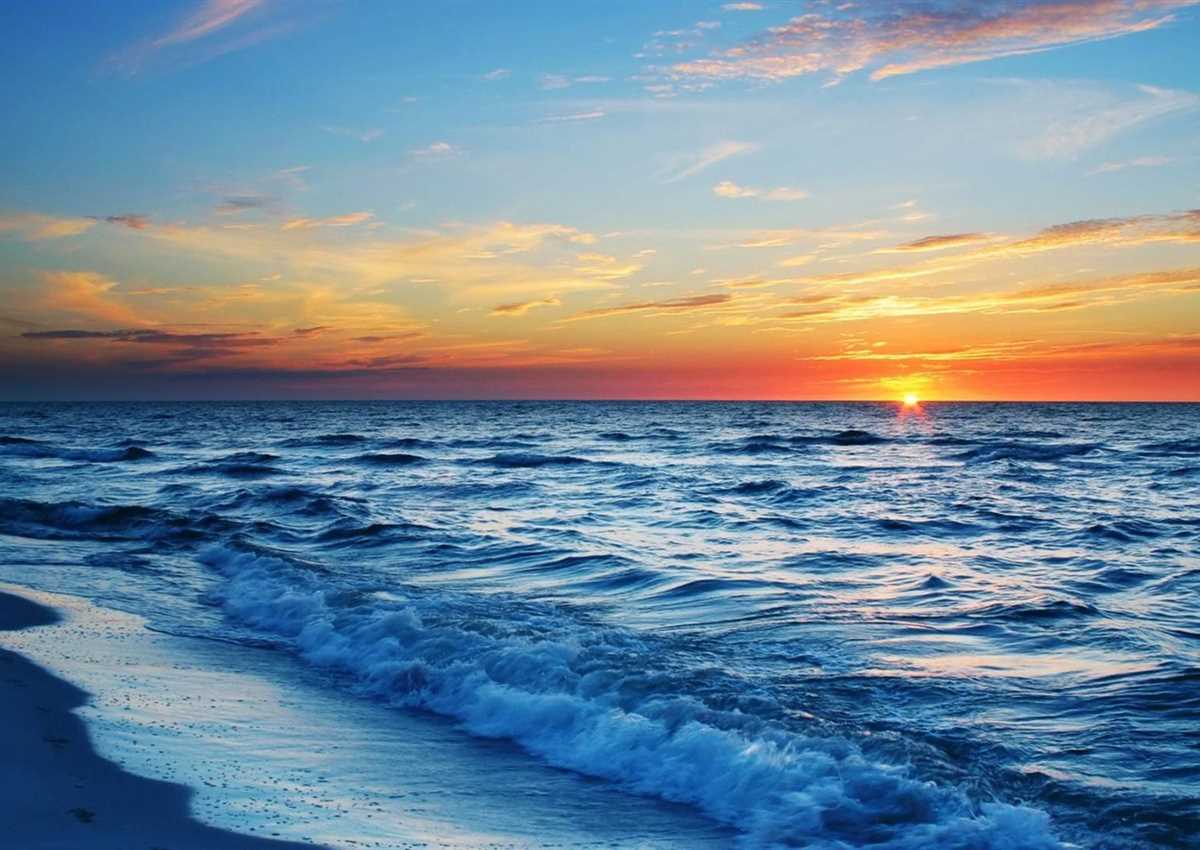
Short and Sweet: Affordable Weekend Getaways for Girlfriends
Planning a memorable weekend with your closest friends shouldn’t drain your savings. From mountain hideaways to coastal escapes, affordable options abound for those seeking relaxation and adventure. Let’s dive into destinations that blend quality time with budget-conscious choices.
Why Weekend Getaways Matter
These quick escapes offer more than just a change of scenery—they’re lifelines in our fast-paced world. Imagine trading work emails for campfire stories, or video calls for sunset walks along unfamiliar shores. A well-planned getaway can strengthen bonds through shared experiences, whether it’s conquering a hiking trail or discovering a hidden gem in a new city.
Consider a cabin near a national park, where stargazing and s’mores become nightly rituals. Or opt for a historic downtown stay, where window shopping and café hopping fill your days. The magic lies in creating those “remember when” moments that outlast any souvenir.
Top Destination Types
Three distinct experiences await:
| Style | Best For |
|---|---|
| Beach Towns | Stress-melting ocean views and water sports |
| Mountain Retreats | Hiking trails and cozy cabin vibes |
| Cultural Cities | Food tours and local art scenes |
“The laughter echoing through unfamiliar streets becomes your trip’s soundtrack.”
Successful trips balance planned activities with spontaneous discoveries. Reserve mornings for adventures and afternoons for leisurely explorations—maybe a vintage shop that wasn’t on the itinerary, or a local bakery with life-changing pastries.

East Coast Escapes
Moosehead Lake, Maine: Wilderness Adventures & Starry Nights
Swap city noise for loon calls at this northern gem. Morning moose safaris reveal antlered giants grazing in misty meadows, while afternoon kayak trips showcase mirror-calm waters. As dusk falls, gather around fire pits with local blueberry wine and ghost stories.
| Activity | Local Twist |
|---|---|
| Guided Hikes | Forage for wild blueberries with park rangers |
| Water Adventures | Moonlit canoe trips with headlamps |
Nantucket, Massachusetts: Cobblestone Charm & Coastal Breezes
This whaling-era island enchants with grey-shingled cottages and rose-covered trellises. Morning finds friends debating which bakery makes the best cranberry scones, while afternoons drift between boutique dressing rooms and beach naps. Don’t miss the ‘Sconset Bluff Walk at golden hour—a pink-hued cliffside path overlooking crashing waves.
Newport, Rhode Island: Gilded Age Glamour & Ocean Trails
Tour the Breakers mansion, then imagine yourselves as Vanderbilt heirs hosting garden parties. The Cliff Walk serves drama at every turn—crashing waves on one side, manicured estates on the other. Cap the day with shared lobster rolls at a dockside shack, watching sailboats bob in the harbor.
“Newport’s mansions remind us that every friend group deserves a castle—even if just for the weekend.”

Southern Charm & Adventure
Asheville, North Carolina: Foodie Trails & Mountain Sunsets
Farm-to-table becomes art here, with chefs transforming heirloom vegetables into edible masterpieces. After touring the Biltmore’s sun-dappled conservatories, time your Craggy Gardens hike for golden hour—the panoramic views demand group selfies. Later, split craft cocktails at a speakeasy hidden behind a unmarked bookstore entrance.
Evening Hack
Book a private chef for a group cooking class using local trout and Appalachian mushrooms.
Franklin, Tennessee: Antique Treasures & Bluegrass Beats
Friday nights find friends two-stepping to fiddle music outside the Franklin Theatre. By day, hunt for vintage finds at Heritage Antique Mall—maybe a retro picnic basket perfect for your next outing. Local candle-making workshops let you create custom scents like “Nashville Nights” (hints of leather and vanilla) as unique souvenirs.
| Experience | Why It’s Special |
|---|---|
| Bluegrass Brunch | Live music accompanies shrimp & grits |
| Barn Dinner Theater | Murder mysteries served with southern comfort food |
Florida Keys: Underwater Wonders & Sunset Toasts
Key Largo’s coral reefs become your group’s floating art gallery during snorkeling tours. As day fades, charter a catamaran for golden hour cocktails, then watch the water sparkle with bioluminescent plankton. For the ultimate bonding moment, try synchronized paddleboarding under a full moon—hilarity guaranteed.

West Coast Wonders
Palm Springs, California: Retro Chic & Mountain Vistas
Mid-century modern meets desert glam here. Book a pastel-hued Airbnb with a kidney-shaped pool for Instagram-worthy morning dips. The Aerial Tramway delivers jaw-dropping valley views—ride up at sunset and watch the city lights flicker to life.
San Diego, California: Coastal Trails & Craft Brews
Start your day tracing seaside cliffs at Torrey Pines, then refuel with Baja-style fish tacos at a beach shack. As afternoon rolls in, flight-sample local IPAs at a brewery with ocean views. For the perfect finale, time your visit to the Seaforth Sunset Sessions—live music aboard a historic schooner.
| Spot | Must-Try |
|---|---|
| Oceanside Pier | Lobster grilled cheese |
| Liberty Station | Cold brew flights |
Boulder, Colorado: Alpine Air & Farmhouse Stays
Chautauqua Park’s wildflower trails lead to panoramic Flatiron views—hike early to beat the crowds. Split a converted farmhouse through Hipcamp for cozy nights by the fire pit. Don’t miss Pearl Street’s kombucha tasting rooms, where flights come with CBD-infused options for ultimate relaxation.
“Boulder proves adventure and avocado toast can coexist beautifully.”

Budget-Friendly City Breaks
Nashville, Tennessee: Honky-Tonk Nights & Mural Magic
Lower Broadway’s neon-lit bars come alive with aspiring country stars—grab happy hour deals before the crowds arrive. The Gulch district serves up Instagram gold with its iconic wing murals. For a quirky detour, visit the Parthenon replica in Centennial Park, complete with Athena’s gilded statue.
Austin, Texas: Food Truck Feasts & Bat-Watching
Start your day with migas tacos from Veracruz All Natural, then paddleboard Lady Bird Lake as the skyline glows. As dusk falls, join hundreds on the Congress Avenue Bridge to witness 1.5 million bats take flight—nature’s free spectacle. Later, bar-hop Rainey Street’s converted bungalows for craft cocktails and live folksy tunes.
Lexington, Kentucky: Bourbon Trails & Equine Encounters
Sip your way through historic distilleries, learning how charred oak barrels create that caramel flavor. At Coolmore America, meet million-dollar racehorses—maybe snap a selfie with next year’s Derby winner. Cap the day with hot brown sandwiches at Wallace Station, a converted general store oozing small-town charm.
| City | Sleep | Eat | Play |
|---|---|---|---|
| Nashville | $120/night | $15-25 meals | Free mural tours |
| Austin | $110/night | $8-15 food trucks | $20 kayak rentals |
| Lexington | $95/night | $10-20 southern fare | $25 distillery tours |

Caribbean Quick Escapes
Nassau, Bahamas: Island Time & Junkanoo Rhythms
Beachfront resorts here offer more than just lounge chairs—try conch salad-making classes or sunset paddleboard yoga. For adventure, hop a boat to Rose Island’s deserted beaches, where the only footprints will be your group’s. If visiting in December, don’t miss the Junkanoo festival, a riot of feathered costumes and goat-skin drumbeats.
| Experience | Local Flavor |
|---|---|
| Cable Beach | Beachside conch fritters |
| Pirates Museum | Interactive treasure hunts |
San Juan, Puerto Rico: Old World Meets Bioluminescence
Wander Old San Juan’s cobblestone streets, stopping for passionfruit mojitos at pastel-colored cafes. As night falls, kayak through Laguna Grande, where every paddle stroke ignites neon-blue plankton. For the ultimate group photo, time your visit to El Morro during golden hour—the golden fort glows against Atlantic blues.
“San Juan’s streets feel like walking through a living history book—one with excellent rum cocktails.”

Planning Essentials
Accommodation Showdown: Cabins vs Boutique Hotels
Cabin advantages: Shared kitchen for midnight snack raids, porch swings for heart-to-hearts, and fire pits for stargazing. Boutique perks: Luxe bathrobes for group spa nights, concierge tips on hidden local gems, and Instagram-worthy common areas.
| Feature | Cabins | Boutique Hotels |
|---|---|---|
| Cost | $120-$300/night | $200-$500/night |
| Privacy | Secluded wooded lots | Downtown locations |
Crafting the Perfect Itinerary
Blend structured activities with white space for spontaneity. A winning formula: Mornings for adrenaline (zip-lining, surf lessons), afternoons for culture (museum hops, food tours), and evenings for relaxation (wine tastings, sunset cruises). Always build in a nap buffer—no one makes good decisions when hangry.
Sample Schedule
8 AM: Sunrise yoga on the beach
10 AM: Farmers market brunch
1 PM: Guided historic walk
4 PM: Poolside reading hour
7 PM: Mixology class
Money-Saving Hacks
Appoint a trip treasurer to track shared expenses in real time. Pre-book activity bundles (kayak rentals + picnic lunches). For meals, split entrées at high-end restaurants to sample more dishes. Always ask about group discounts—many tours offer 15% off for parties of four or more.

Conclusion: Making Memories with Affordable Getaways
The magic of these trips lies not in five-star luxuries, but in shared moments—that uncontrollable laughter during a failed paddleboard attempt, or the collective “wow” during a sunset hike. Whether it’s splitting an oversized dessert or navigating a new city’s subway, these experiences weave the fabric of lasting friendships.
As you plan, focus less on perfection and more on possibility. That wrong turn might lead to a quaint bookstore with the perfect group souvenir. The rainstorm could become your favorite memory, huddled under blankets with board games and local wine. Pack your sense of adventure, leave room for spontaneity, and let the journey bring you closer together.
Overwater Bungalows vs Traditional Resorts: Which One Should You Choose?
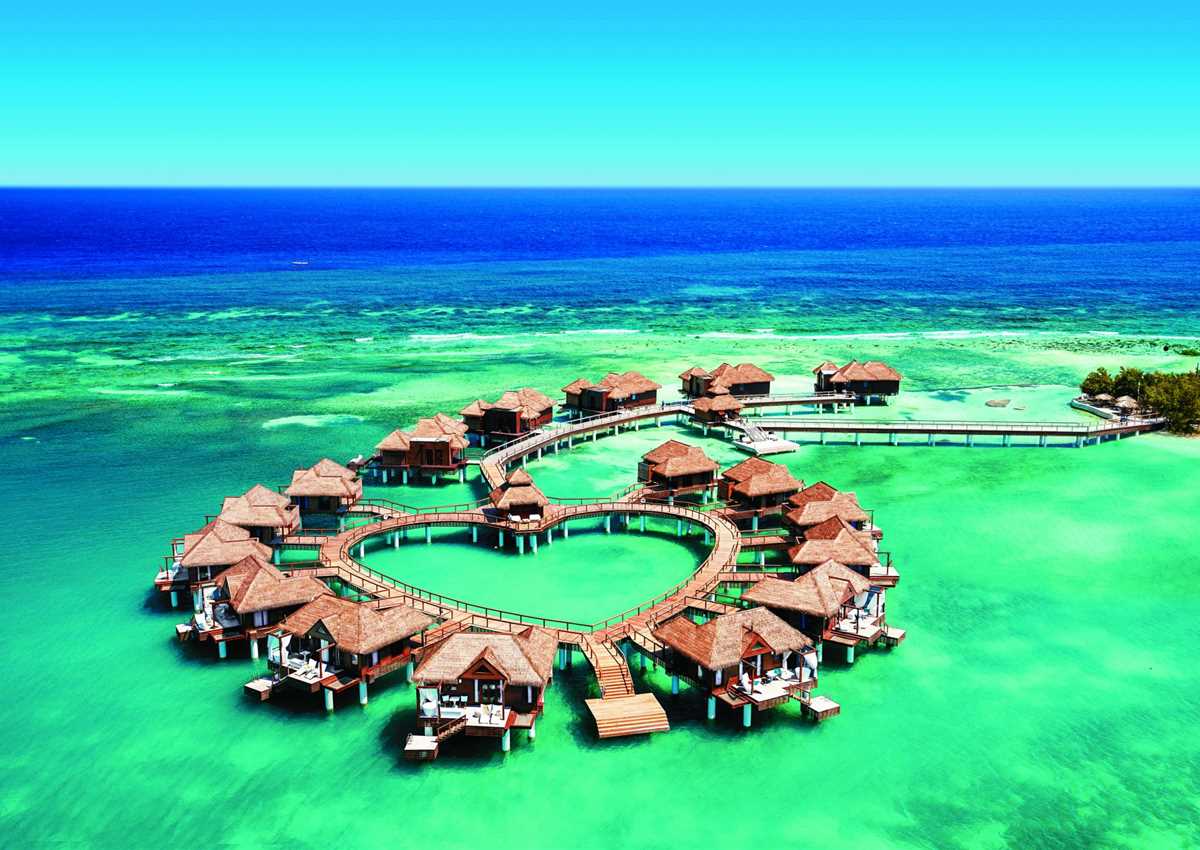
Introduction to Overwater Bungalows and Traditional Resorts
Choosing between overwater bungalows and traditional resorts shapes your entire vacation experience. Overwater bungalows, perched above turquoise lagoons in destinations like Bora Bora and the Maldives, blend natural materials like thatched palm roofs with modern luxuries. Glass floor panels – often called “Tahitian television” – reveal vibrant marine life below, while private decks offer direct ocean access through ladders or steps. These secluded retreats cater to couples seeking romance or travelers craving immersion in nature’s rhythm.
Traditional resorts provide a different kind of appeal, with clustered layouts designed around shared amenities. From beachfront complexes to mountain lodges, they offer multi-generational activities, diverse dining options, and easier access to local communities. Whether you prioritize stargazing from a private net lounge or kids’ clubs with supervised activities, your accommodation choice becomes the foundation of your getaway.
“The true magic lies not in the destination, but how you experience it – whether through the gentle lap of waves beneath your floorboards or the laughter echoing from resort pools.”

Architectural Design and Location
Overwater Structures: Privacy and Water Access
Overwater bungalows are engineering marvels designed for harmony with their environment. Constructed using sustainably harvested timber and anchored with concrete pillars, these standalone structures offer direct lagoon access through private decks. Inside, woven bamboo walls and airy layouts emphasize natural light, while glass floor panels create living aquariums showcasing parrotfish and rays. Modern iterations might include sunrise-facing decks for optimal wildlife viewing or shaded lounges to enjoy sea breezes without the midday sun.
Traditional Resorts: Land-Based Amenities and Layouts
Land-based resorts master the art of communal spaces, with accommodations arranged around central pools, spas, and restaurants. Lush landscaping creates natural privacy screens between units, while architecture often reflects local cultural elements – think Balinese-style pavilions or Mediterranean-inspired courtyards. The clustered layout encourages social interaction while providing quick access to amenities like tennis courts and kids’ clubs.
| Feature | Overwater Bungalows | Traditional Resorts |
|---|---|---|
| Privacy Level | High (standalone structures) | Moderate (clustered layouts) |
| Water Access | Direct from room | Shared beach/pool areas |
| Common Amenities | Private decks, glass floors | Multiple pools, sports facilities |
“While overwater bungalows excel in seclusion, traditional resorts win at convenience – you can grab a cocktail and join a beach volleyball game within minutes.”
Design Considerations
New hybrid models bridge both worlds, combining overwater privacy with land-based amenities via boardwalks. Some water villas now include private infinity pools suspended above the lagoon, while land resorts add “overwater-inspired” suites with glass floor sections.

Cost Comparison and Value Proposition
Pricing Tiers: Budget to Ultra-Luxury Options
Overwater bungalows command premium pricing, with entry-level options starting around $800/night in peak season. Traditional resorts offer broader price flexibility, from $150/night budget stays to $5,000+/night ultra-luxury villas. However, water villas often include unique perks:
| Accommodation Type | Budget Tier | Mid-Range | Luxury |
|---|---|---|---|
| Overwater Bungalows | $600-$900/night | $1,200-$2,000 | $2,500+ |
| Traditional Resorts | $150-$300 | $400-$800 | $1,000-$5,000 |
Included vs Add-On Experiences
While traditional resorts often charge à la carte for premium experiences, overwater bungalows bundle memorable extras:
What’s Typically Included
- Overwater Standards: Kayaks, paddleboards, marine life guided tours
- Resort Norms: Pool access, fitness centers, shuttle services
“The magic of watching bioluminescent plankton swirl beneath your glass floor at midnight? That’s the kind of inclusion that defies price tags.”
Traditional resorts counter with multi-restaurant dining and cultural programming rarely found at boutique overwater properties. From cooking classes with local chefs to traditional dance performances, they provide broader cultural immersion.

Overwater Bungalow Perks
Direct Water Access and Marine Life Encounters
Roll out of bed and into a private aquatic wonderland. Overwater bungalows eliminate the need for beach walks or boat rides to prime snorkeling spots – simply descend your ladder to explore coral gardens teeming with clownfish and sea turtles. Glass floor panels, particularly those with nighttime illumination, reveal nocturnal marine activity most travelers never witness.
Exclusivity and Romantic Appeal
These secluded sanctuaries specialize in intimate moments, offering features rarely found at traditional resorts:
| Feature | Overwater Bungalow | Traditional Resort |
|---|---|---|
| Private plunge pools | ? Standard | ? Rare |
| Overwater hammocks | ? Common | ? Unavailable |
| Personalized dining | ?? Floating breakfasts | ??? Restaurant-only |
“We fell asleep in our stargazing net lounge to the rhythm of waves, then woke to breakfast delivered by outrigger canoe – it felt like having our own private island.”
?? Why couples prefer overwater stays
The combination of limited foot traffic and constant water sounds creates a natural soundscape for romance. Many properties offer “no staff intrusion” guarantee systems for complete privacy.

Traditional Resort Advantages
Traditional resorts shine in their ability to cater to diverse traveler needs. Families appreciate the kid-friendly infrastructure – from zero-entry pools with water slides to supervised arts programs. Multi-generational groups benefit from room configurations offering separate living spaces, while culture seekers enjoy easy access to local markets and historical sites.
| Facility | Description |
|---|---|
| Kids’ Clubs | Age-specific activities from treasure hunts to language lessons |
| Teen Lounges | Video game stations and mocktail bars |
| Family Suites | Interconnected rooms with kitchenettes |
Cultural Immersion and Local Exploration
Unlike isolated overwater bungalows, land-based resorts often sit near communities where guests can:
- Join traditional fishing expeditions
- Learn ancestral cooking techniques
- Attend village festivals
“Our resort’s partnership with local weavers let guests create their own tapestries using century-old looms – these authentic interactions become vacation highlights.”

Ideal Scenarios for Overwater Bungalows
Honeymoons and Anniversary Celebrations
Overwater bungalows were practically invented for romance. Imagine celebrating your anniversary with a private dinner on a deck surrounded by bioluminescent waters, followed by a midnight soak in an infinity pool that seems to spill into the ocean. Signature features include:
| Feature | Benefit |
|---|---|
| Private infinity pools | Champagne-soaked sunsets without crowds |
| Outdoor rainfall showers | Bathing under the stars |
| Glass-bottom floors | 24/7 aquatic theater |
“We renewed our vows on the deck at dusk, surrounded by nothing but ocean – no photographer needed, the sunset handled the lighting perfectly.”
Snorkeling and Water Sports Enthusiasts
For aquatic adventurers, overwater bungalows provide instant access to thriving marine ecosystems. The house reefs beneath many complexes rival marine sanctuaries, with regular visits from rays and reef sharks. Practical touches like gear rinse stations and drying racks make spontaneous snorkeling sessions effortless.
While traditional resorts might offer more activity variety, overwater stays eliminate transit time between adventures and relaxation – your personal aquatic playground awaits just below your floorboards.

When to Choose Traditional Resorts
Multi-Generational Family Vacations
From toddler play zones to teen gaming lounges, traditional resorts specialize in keeping all ages engaged. Spacious suites with kitchenettes allow for family meals, while kids’ clubs offer cultural activities like lei-making or drumming workshops. The variety ensures grandparents can enjoy spa time while parents join mixology classes – all within walking distance.
| Amenity | Description |
|---|---|
| Kids’ Pools | Zero-entry designs with water features |
| Family Suites | Separate bedrooms and living areas |
| Evening Entertainment | Fire shows, movie nights, cultural performances |
Land-Based Adventure Seekers
Traditional resorts serve as perfect bases for explorers craving terrestrial adventures. Whether hiking volcanic trails in Hawaii or riding camels in Dubai, their concierge teams excel at arranging off-property excursions. Many partner with local guides to offer exclusive experiences like private archaeological site access.
“Our resort arranged a sunrise hike with a geologist who explained the island’s formation – then we returned to a brunch spread worth the climb.”

Best Regions for Overwater Bungalows
Caribbean vs South Pacific Offerings
The Caribbean delivers vibrant coral reefs and year-round warmth, while the South Pacific specializes in iconic overwater villas with unmatched seclusion. Key differences:
| Feature | Caribbean | South Pacific |
|---|---|---|
| Average Stay | 4-5 nights | 7+ nights |
| Signature Perk | Free water sports | Cultural immersion programs |
Weather Considerations
Time your visit wisely:
- Caribbean: Hurricane season peaks June-November
- South Pacific: Cyclone risks rise November-April
“We visited French Polynesia in May – mild temperatures, fewer showers, and perfect water clarity for our underwater wedding photos.”
Modern bungalows incorporate hurricane-resistant glass and submerged lighting for safety, while traditional resorts often provide inland alternatives during rough weather.

Traditional Resort Hotspots
Mountain and Urban Destination Options
From Swiss chalets to Tokyo high-rises, traditional resorts adapt to their environments. Mountain properties feature ski-in/ski-out access and cozy firepits, while urban resorts offer rooftop mixology classes and walking access to cultural landmarks.
| Mountain | Urban |
|---|---|
| Private hot springs | Skyline infinity pools |
| Guided wildlife hikes | Architecture tours |
Year-Round Accessibility
Unlike seasonal overwater bungalows, land-based resorts operate through all weather. Colorado properties use heated walkways during snow season, while Dubai resorts employ climate-controlled domes over pool areas during summer months.
“Our urban resort’s underground passage to the museum district kept us exploring despite the monsoon rains outside.”

Overwater Bungalow Selection Tips
Shallow vs Deep Water Villa Considerations
Shallow water villas (1-3m depth) offer brighter marine colors and easier snorkeling access, while deep water villas (4m+) provide dramatic drop-off views and better swimmer privacy. Consider your priorities:
| Villa Type | Best For | Consideration |
|---|---|---|
| Shallow | Snorkelers, photographers | Potential seaweed during low tide |
| Deep | Privacy seekers, strong swimmers | Cooler water temperatures |
Private Island vs Mainland Resort Access
Private island bungalows offer ultimate seclusion but require boat transfers for supplies. Mainland-connected overwater villas provide easier access to local restaurants and cultural sites via boardwalks or bridges.

Traditional Resort Booking Hacks
All-Inclusive vs À La Carte Packages
All-inclusive plans work best for those who value predictable budgeting, while à la carte suits foodies wanting to explore local eateries. New hybrid options allow dining at multiple resort restaurants under one package.
| Package Type | Best For | Tip |
|---|---|---|
| All-Inclusive | Families, relaxation-focused travelers | Verify premium liquor inclusion |
| À La Carte | Food explorers, cultural seekers | Ask about local restaurant partnerships |
Room Upgrade Strategies
Timing matters: inquire about upgrades during check-in lulls (typically 10am-noon). Join loyalty programs for complimentary view upgrades, and always mention special occasions.

Innovations in Overwater Bungalow Design
Multi-Level Villas with Water Slides
Modern designs now include two-story villas with private slides into the lagoon, plus suspended infinity pools between levels. These engineering feats maintain traditional aesthetics while adding playful elements.
Sustainable Building Practices
Leading resorts use coral-friendly foundations and recycled materials. Solar-powered villas with rainwater harvesting systems reduce environmental impact while maintaining luxury standards.
“Our villa’s glass floor used recycled ship windows, and the deck timber came from storm-felled trees – luxury doesn’t have to cost the earth.”

Overwater Bungalows vs Traditional Resorts: Which One Should You Choose?
Your ideal choice depends on travel purpose and personal style. Overwater bungalows deliver unmatched romance and marine access, while traditional resorts excel in cultural immersion and family programming. New blended models now offer the best of both worlds.

Luxury Travel Trends Shaping Accommodation Choices
2025 Demand Drivers
Multi-generational travel and “calmcations” dominate 2025 trends. Villas with separate living spaces cater to extended families, while overwater bungalows now offer sleep programs with circadian lighting and acoustic optimization.
Tech-Enabled Personalization
AI-powered room selectors now match guests with ideal accommodations based on preferences like “sunrise views” or “proximity to kids’ club.” Hybrid resorts use apps to let guests switch between overwater and land-based experiences seamlessly.

Sustainability and Cultural Integration
Eco-Conscious Features
Overwater bungalows now participate in coral propagation programs, while traditional resorts implement zero-waste kitchens. Both incorporate local materials – from Maldivian coral stone to Balinese paras sandstone.
Authentic Local Experiences
From Fijian kava ceremonies to Maldivian traditional fishing trips, accommodations increasingly connect guests with cultural keepers. Overwater bungalows now offer marine biologist-led tours, while land resorts host masterclasses with indigenous artisans.

Industry Innovations Influencing Decisions
Boutique partnerships like Hilton’s SLH collaboration bring unique designs to global audiences. Overwater bungalows now feature modular constructions allowing easier updates, while traditional resorts repurpose spaces into pop-up cultural venues.
| Innovation | Overwater Bungalows | Traditional Resorts |
|---|---|---|
| Tech Integration | Illuminated glass floors | AR cultural tours |
| Space Usage | Convertible deck spaces | Pop-up event venues |

Conclusion: Overwater Bungalows vs Traditional Resorts
Your dream vacation depends on aligning accommodations with your travel personality. Overwater bungalows deliver once-in-a-lifetime romance and marine immersion, while traditional resorts offer cultural depth and multi-generational flexibility. With new hybrid models emerging, you might not have to choose.
| Feature | Overwater Bungalows | Traditional Resorts |
|---|---|---|
| Best For | Romance, marine enthusiasts | Families, cultural explorers |
| Pace | Relaxed, intimate | Active, social |
| Memorable Moment | Bioluminescent night swims | Multi-generational dance lessons |
“We did both – a week in an overwater villa for our anniversary, then moved to a family resort when the kids joined. Perfect blend of romance and reunion.”
Pinterest changes
Check it out
Unico Puerto Vallarta: The Next-Level Luxury Escape We’ve All Been Waiting For!
First Impressions: Modern Elegance Meets Puerto Vallarta Sunshine
From the moment you arrive, Unico wraps you in sophisticated vibes—airy spaces, sleek finishes, and the kind of indoor-outdoor flow that makes you want to sink into a plush chair with a craft cocktail and never leave. The whole resort is designed through a modern, thoughtful lens, giving you a true sense of place in Vallarta.
“Be among the first to experience UNICO’s next chapter and discover Vallarta through a thoughtful, modern lens.”
Suite Dreams: Where Comfort Meets Chic
Let’s talk about the showstoppers—the suites at Unico Puerto Vallarta!
Every suite is designed to be your personal sanctuary, blending sophisticated Mexican style with all the comforts of home (and then some!).
Here’s what sets the suites apart:
-
Spacious, Light-Filled Layouts: Floor-to-ceiling windows, private balconies or terraces, and open-plan living that feels luxurious and airy.
-
Modern Mexican Decor: Think natural woods, handcrafted details, and soothing neutral palettes with pops of local art.
-
Spa-Inspired Bathrooms: Double vanities, rainfall showers, and soaking tubs that make every day feel like a spa day.
-
In-Room Amenities: Plush beds, curated minibar (yes, it’s included and personalized!), Nespresso machine, and dreamy bathrobes.
-
Swim-Up Suites: For the ultimate indulgence, step from your terrace straight into a semi-private pool—pool days just got an upgrade!
-
Ocean Views: Many suites offer panoramic Pacific views, perfect for those unforgettable Vallarta sunsets.
Whether you’re celebrating a honeymoon, anniversary, or just treating yourself, the suite experience at Unico is designed for serious wow factor and total relaxation.

Wellness Elevated: Esencia Spa
Imagine unwinding in a sanctuary where Mexico’s rich traditions meet contemporary sophistication. The Esencia Wellness center is pure serenity, with treatments inspired by local culture, tranquil spaces, and a vibe that just begs you to let your worries melt away.
“UNICO 20°105° Hotel Vallarta embodies the essence of México Moderno, where vibrant traditions meet contemporary sophistication.”
Dining Like a Local (But Better)
Foodies, this one’s for you! Unico Puerto Vallarta boasts four incredible restaurants. Think fresh, locally sourced ingredients, creative cocktails, and flavors that will have you planning your next meal before you’ve finished your first. Whether you’re in the mood for Japanese cuisine at KOBO or something with a modern Mexican twist, there’s something to thrill every palate.
“Four exceptional restaurants offering a diverse selection of cocktails and cuisine, prepared using locally sourced ingredients.”

Pools, Views, and Rooftop Magic
Let’s be honest—the pool scene matters. At Unico, the rooftop infinity-edge pool is everything. Sip a margarita, soak in the sweeping Pacific views, and enjoy the bar and lounge vibes from sunrise to sunset. This is the place for ultimate relaxation (and Instagram-worthy moments).
“Rooftop infinity-edge pool, bar and lounge with incredible views of the vast Pacific.”
Why I’m So Excited About Unico Puerto Vallarta
-
Modern, adults-only luxury in a prime beachfront location
-
Gorgeous, design-driven spaces with a local touch
-
Spa, dining, and activities to spoil you at every turn
-
A “host” program for personal touches and curated experiences
-
Suites that set a new standard for comfort and style
-
That signature Unico energy—laidback, but never boring!
Let’s Get You Booked—Before Everyone Else!
Ready to be one of the first to experience Unico Puerto Vallarta?
Whether you’re dreaming of a romantic escape, a friends’ getaway, or simply need some YOU time, I’ve got you covered from start to finish. Reach out for insider tips, VIP perks, and the best rates—let’s make this vacation your new favorite memory!

Contact Christina Cupples
Vacays By Christina with Vincent Vacations
📧 christina@vincentvacations.com
📱 817-205-3628
VacaysByChristina.com
Follow me on Facebook
Ready to trade your ordinary for extraordinary? Unico Puerto Vallarta is calling your name—let’s make it happen! 🌴✨
Overview of Suppliers
Preferred Supplier Partners
Cruise Suppliers
- Abercrombie & Kent – Cruises
- AmaWaterways
- American Cruise Lines
- Aqua Expeditions
- Australis Cruises
- Avalon Waterways
- Azamara®
- Carnival Cruise Line
- Celebrity Cruises®
- Crystal
- Cunard®
- Disney Cruise Line
- Explora Journeys
- Holland America Line
- Hurtigruten/HX
- Lindblad Expeditions
- Norwegian Cruise Line®
- Oceania Cruises
- Paul Gauguin Cruises
- PONANT
- Princess Cruises®
- Quark Expeditions
- Regent Seven Seas Cruises®
- Ritz-Carlton Yacht Collection
- Royal Caribbean International®
- Sea Cloud Cruises
- Seabourn
- SeaDream Yacht Club
- Shore Excursions Group, LLC and TourSales.com
- Silversea
- Star Clippers
- Tauck – Cruise Division
- The Moorings
- UnCruise Adventures
- Uniworld Boutique River Cruises
- Viking
- Virgin Voyages
- Windstar Cruises
Land Suppliers
- Abercrombie & Kent
- Adventures by Disney®
- African Travel, Inc.
- Alexander+Roberts
- Amtrak Vacations
- Apple Vacations
- Avanti Destinations
- Backroads
- Bedsonline
- Belmond Peruvian Trains
- Belmond Trains & Cruises
- Brendan Vacations
- CIE Tours
- Classic Vacations
- Club Med
- Context Travel
- Contiki
- Cosmos
- CostSaver
- Country Walkers
- Delta Vacations®
- Europe Express
- Funjet
- G Adventures
- Globus
- Goway Travel
- HVN Travel Group
- Insight Vacations
- Island Destinations
- Journese
- Kuoni Tumlare (formerly Maestro Private Tours)
- Luxury Gold
- Micato Safaris
- MT Sobek
- National Geographic Expeditions
- Natural Habitat Adventures
- onefinestay
- Pleasant Holidays
- Premier Golf LLC
- Project Expedition
- Rail Europe North America Inc.
- Railbookers
- Roadtrips Sports Travel
- Rocky Mountaineer
- Ski.com
- Space Perspective
- Swain Destinations
- Tahiti Legends
- Tauck
- TCS World Travel – Private Custom Travel
- TCS World Travel – Private Jet Expeditions
- Trafalgar
- Travel Answers (Formerly Travel2)
- Travel Impressions
- Traveling Spoon
- United Vacations
- Universal Parks & Resorts Vacations® (UPRV)
- VBT Bicycling Vacations
- Villas of Distinction
- Walks | Devour
- Walt Disney Travel Co. – California
- Walt Disney Travel Co., Inc – Florida
- Way To Go Tours
- Yankee Holidays
Excursions and Activities
- Bedsonline (hotels, excursions, transfers, theme parks)
- Context Travel (walking tours)
- Europe Express (shore excursions and day excursions)
- Events 365 (event, concert and sports event tickets)
- Pleasant Activities (day excursions and experiences)
- Project Expedition (single day activities, multi day tours, shore excursions and transfers)
- Shore Excursions Group (shore excursions)
- Toursales.com (day tours and experiences)
- Traveling Spoon (culinary dining experiences)
- Walks | Devour (walking tours & food tours)
Tourism Boards
- Abu Dhabi Department of Culture & Tourism
- Andalucia Tourist Board
- Aruba Tourism Authority
- Barcelona Premium
- Bahamas Tourist Office
- Belize Tourism Board
- Bermuda Tourism Authority
- British Virgin Islands Tourist Board & Film Commission
- Catalan Tourist Board
- Chile Tourism Board
- Costa Rica Tourism Board
- Croatian National Tourist Board
- Destination Canada
- Destination Greater Victoria (B.C.)
- Destination NSW
- Destination Vancouver
- Discover Puerto Rico
- Dominican Republic Ministry of Tourism
- Dubai Economy & Tourism
- Ecuador Tourism Board
- Experience AlUla
- Explore Charleston
- Florida Keys & Key West
- Visit Florida
- Visit California
- Visit Finland
- Visit Britain
- VisitDenmark
- Visit Lauderdale
- Visit Norway
- Visit Portugal
- Visit Victoria (Australia)
- German National Tourist Office
- Greek National Tourism Organization
- Greater Miami & Miami Beaches
- Greater Palm Springs Convention & Visitors Bureau
- Hawaii Visitors & Convention Bureau
- Hungarian Tourism Agency Ltd
- Indigenous Tourism Association of Canada
- Israel Ministry of Tourism
- Italian National Tourist Board
- Japan National Tourism Organization (JNTO)
- Jordan Tourism Board North America
- Korea Tourism Organization
- Las Vegas Convention and Visitors Authority
- Los Angeles Tourism & Convention Board
- Los Cabos Tourism Board
- Nashville Convention & Visitors Corp
- Newfoundland & Labrador
- Nova Scotia
- NYC & Company
- Philippine Department of Tourism
- PROMPERU – Peru Tourism Board
- Polish National Tourist Office
- Prince Edward Island
- Qatar Tourism
- Quebec City Tourism
- Quebec Tourism
- Saudi Tourism Authority
- Santa Monica Travel & Tourism
- San Francisco Travel
- Slovenian Tourist Board
- South African Tourism
- South Australian Tourism Commission
- Switzerland Tourism
- Tahiti Tourisme United States
- Taiwan Tourism Bureau
- Tenerife Tourism Board
- The Florida Keys & Key West
- The Nordics
- Tourism and Events Queensland
- Tourism Australia
- Tourism Authority of Thailand
- Tourism Fiji
- Tourism Ireland
- Tourism New Brunswick
- Tourism New Zealand
- Tourism Northern Territory
- Tourism Saskatchewan
- Tourism Toronto
- Tourism Western Australia
- Tourism Whistler
- Tourism Yukon
- Tourisme Montréal
- Tourist Office for Flanders-Belgium
- Tourist Office of Spain
- VisitSweden
- Zurich Tourism
Travel Insurance
- Travel Insured
- Arch RoamRight
- Allianz
- Medjet
Travel Services
- Blue Ribbon Bags
- CIBTvisas
- Events 365 powered by Ticket Evolution
- Luggage Free
- Special Needs Group/Special Needs at Sea
Air
- Air by Pleasant
- Air New Zealand
- Centrav
- Chapman Freeborn Airchartering, Inc (Private Jet)
- Fiji Airways
- Global Marine Travel
- Mondee Inc
- Picasso Travel
- Qatar Airways
- Signature Air Program, powered by Frosch
- TCS World Travel – Private Jet Expeditions
CarLimo
- Auto Europe
- Avis Budget Group
- Bedsonline – Transfers
- Carey Worldwide Chauffeured Services
- EmpireCLS Worldwide Chauffeured Services
- Project Expedition – Transfers
- The Hertz Corporation
Villas and Rental Homes
- HVN Travel Group
- Onefinestay
- Villas of Distinction
- Bedsonline
- Classic Vacations (focused on hotel owned and managed properties)
- Travel Impressions
Destination Specialists
Destination Specialist Portfolio Summary
| Region | Specialists | Offices in Country | Countries Serviced |
|---|---|---|---|
| Africa | 9 | 28 | 13 |
| Asia | 13 | 39 | 25 |
| Europe | 36 | 47 | 32 |
| Middle East | 7 | 7 | 10 |
| Central & South America | 12 | 12 | 11 |
| North America, Caribbean & Mexico | 13 | 13 | 15 |
| South Pacific | 4 | 5 | 9 |
| Total | 94 | 151 | 115 |
15 Things Destination Wedding Couples Don’t Stress Over

Think of a destination wedding as a vacation and a wedding all rolled into one. What could be better? However, a lot of jet-setting couples think that having a destination wedding means more stress than fun, since there can sometimes be a bit more legwork involved when it comes to planning an out-of-town wedding.
That’s why we’ve decided to round up 15 things you DON’T have to worry about if you are having a destination wedding. If you’ve been on the fence about whether or not a destination wedding is right for you, this might help sway your decision.
Here are 15 things that you don’t need to stress about when you have a destination wedding:
- Having a large guest list: A destination wedding gives you the opportunity to have a more intimate celebration where you are surrounded by only your nearest and dearest. Since extra travel costs and expenses are involved, don’t feel obligated to invite everyone you’ve ever met. A smaller guest list will also keep your budget down, since fewer people means fewer entrée and drink orders.
- Becoming distracted: A destination wedding means you’re away from home and the usual distractions. No household chores, no work emails, no last-minute errands. Instead, you’ll be spending the days leading up to your wedding relaxing and enjoying a new location, perhaps a tropical paradise!
- Finding transportation: With most destination weddings, the ceremony and reception take place at the same location, eliminating the need for complicated transportation. This allows you to focus on enjoying the day with your guests.
- Formal wedding attire: Destination weddings are typically more laid-back and casual. Think beach weddings with light and airy gowns or no shoes during the ceremony. You won’t need to worry about a formal black-tie affair, which many guests will appreciate.
- Over-decorating: Since destination weddings are usually held in stunning locations, such as crystal-clear beaches or breathtaking mountains, you won’t need much in the way of extra decorations. The natural beauty of the venue will do the job for you.
- Waking up early for the honeymoon: After the wedding, you’re already at your honeymoon destination! No rushing to catch a flight the next morning. Instead, you can sleep in and begin your relaxation right away.
- Large Guest List: The travel and expenses involved naturally reduce the guest list. This also helps keep your budget in check with fewer meals and drinks to provide.
- Distractions: Being away from home means fewer daily distractions, allowing you to focus on enjoying your time and the wedding experience itself. The unfamiliar setting helps you fully relax and immerse yourself in the joy of the moment.
- Transportation Hassles: Most destination weddings take place at resorts or single venues, eliminating the need for complicated transportation logistics. You and your guests can simply enjoy the celebration without worrying about moving between locations.
- Formal Wedding Attire: Destination weddings are typically more relaxed, especially for beach or outdoor settings. You can opt for casual, airy clothing without the pressure of a formal, black-tie affair, which often appeals to both couples and guests.
- Over-Decorating: The natural beauty of a destination wedding venue means you don’t need to spend much time or money on elaborate decorations. Whether it’s a beachfront paradise or scenic mountains, the stunning surroundings will enhance the wedding atmosphere without extra effort.
- Rushing for the Honeymoon: Since you’re already at your honeymoon destination, there’s no need to wake up early and catch a flight the next day. You can immediately start enjoying your post-wedding relaxation without the stress of traveling.







